Escape, Refuge and Utopia in Ascona, Switzerland by David Roberts
Having done the Peace Walk in next door Locarno, I returned to the Swiss end of Lago Maggiore for a shirt stay in Ascona and a trip to nearby Brissago . Ascona is a charming little resort town at the lakeside. There is a strip of restaurants along the lake, you can eat at a different one every night , as the view fractionally changes as you move a few yards along the lake- but expect to pay Swiss prices. Apart from pleasant restaurants, it is trove of arts and antique shops which never seem to open. Well having an eye on the Swiss Franc, I expect they do open – they just don’t seem to do so when any tourists might be wandering around after dinner to buy something.
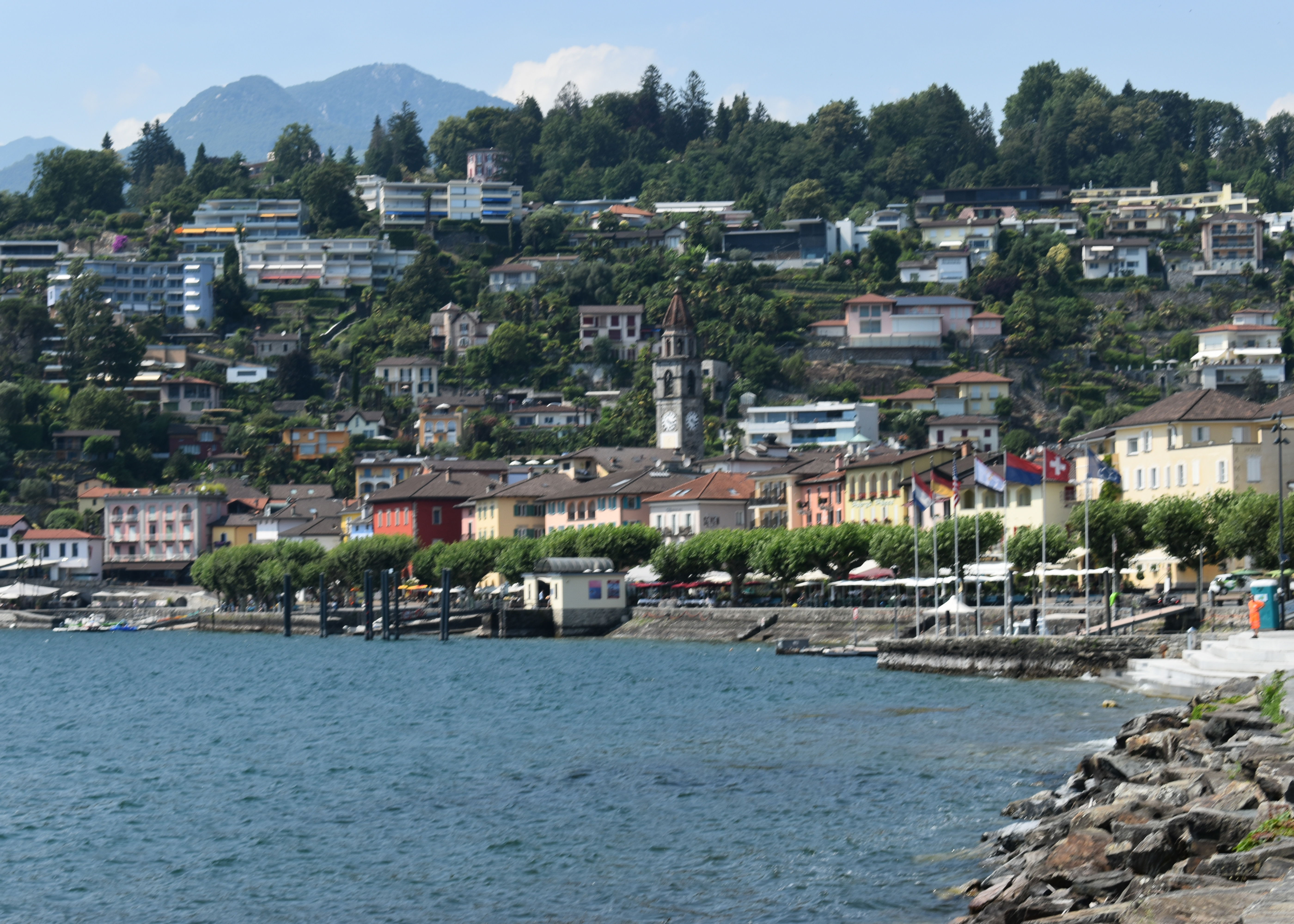
The charming lakeside resort of Ascona
There is no train station in Ascona, you have to get the number 1 bus from Locarno station,; however it’s a Swiss bus, so t turns up on time and gets you to Ascona in ten minutes, announcing every stop as it goes , so you cannot really go wrong . The automatic ticket machine always worked and it costs 2,30 CHF which by Swiss standards is remarkably good value. Actually its about the only cheap thing in Ascona. Although these days it is a sleepy little resort, Ascona has a claim to fame as the place where the Allies and Germans held some very secret talks regarding which under the name of Operation Sunrise . The progress made at Ascona, ultimately led to the unconditional surrender of the German forces still fighting in Italy in Spring 1945. With a bit better timing and some more political will by the Americans, they might have had to the Germans opening the whole Western Front and a shortening of the war by several months. Unfortunately that did not happen,. It turns out that besides Operation Sunrise, Ascona has a few other interesting secrets. It is also famous for having been a centre of early twentieth century counter culture, where lots of earnest Germans and Austrians flocked to experiment with dance, art, philosophy, and alternative healing. A sort of mini-California in Switzerland. Brissago about three hours walk from Ascona , is even smaller and more obscure although the name might sound vaguely familiar to Hemingway fans and possibly horticultural enthusiasts.
So we are taking a stroll from Ascona to Brissago , taking in some interesting historic information on the way .Starting from the centre of Ascona, you have to walk up a rather long and exhausting fight of stairs to get Monte Verità and the road to Brissago. Formerly known as Monte Monescia, from 1900 Monte Verità was the centre of Ascona’s counter culture. While many Germans and Austrians were earnestly making money and preparing to plunge Europe into war, a few of their fellow countrymen and women headed south to Switzerland to experiment with a heady brew of psychology, anarchism, modern dance , veganism, nature cures and the worship of nature.
In the autumn of 1900, a 25-year-old industrialist's son from Antwerp Henri Oedenkoven ,German pianist Ida Hofmann , together with Karl Gräser ,Gustav Gräser and Lotte Hattemer, found a plot of land , an abandoned vineyard, on Monte Monescia . With purchases from other owners, they acquired four hectares of land. Here they founded their "vegetable cooperative", a community initially on a vegan and later vegetarian basis, and in 1902 they gave it the name Monte Verità. The name did not claim to have found the 'truth’ but were striving to make their own particular truth. They settled in, grew their hair, constructed spartan wooden cabins , tended their vegetable , took sun baths and danced around naked. It seems the centre was originally regarded with some suspicion but the local Ticino natives, being known as "Il prato di Parsifal" and the "La rocca di Valchiria" , probably due to the new occupant’s fondness for Wagner.
Early models for the Monte Verità may have included the Oranienburg "Eden Cooperative Fruit Growing Colony" (Eden Gemeinnützige Obstbau-Siedlung and the artist community around the German painter and life-reformer Karl Wilhelm Diefenbach (t the "Himmelhof" near Vienna, where Gustav Gräser had been his student. In order to finance the settlement project and at the same time make it known to a larger public, Oedenkoven and his partner Hofmann founded the Nature Healing Sanctuary Sun Sanatorium (Naturheilstätte Sonnen-Kuranstalt), which was followed shortly afterwards by the Monte Verità Sanatorium (Sanatorium Monte Verità). One of the early guests of this institution was the barefoot itinerant preacher Gustaf Nagel who took a short break on Monte Verità in November 1902 on his missionary journey from Arendsee to Jerusalem. Anarchist physician Raphael Friedeberg moved to Ascona in 1904, attracting many other anarchists to the area. Artists and other famous people attracted to this hill included the authors Hermann Hesse and Erich Maria Remarque , psychologists Carl Jung and Otto Gross, ; the dancers Isadora Duncan, Mary Wigman and Rudolf von Laban, , Paul Klee, ,educationalist Rudolf Steiner, , the anarchist Erich Mühsam, sociologist Max Weber, and Gustav Stresemann, Frieda ( later DH Lawrence’s wife) and Else von Richthofen. They were not all there at the same time, some were pre war and some in the 1920s/1930s.
Rudolf Laban had his dancers dance in the open air looking for some sort of mystical ecstasy, a dance based on rhythm that meant to voice pent-up emotions and that combined a quest for health, strength and corporeal beauty. This theorist of expressionist dance meant to reconnect nature and the body and taught his dancers to experience time, space and energy intensely through their senses. In the summer of 1913, Wigman joined Laban and danced intensely rhythmical dances, hovering between ecstasy and suffering, joy and despair, freedom, vitality and sacrificial impulses. For her as for Laban, the truth of dancing lay in a confrontation with one’s own ‘daemon’. This is what she implemented in 1914 in Hexentanz (‘The Witch’s Dance’), trying to reach a cathartic moment. This solo was danced entirely from a seat with her face covered by a mask, which Wigman used with the intention of erasing the individuality of those who dance and thus enhancing the universality of the human being.
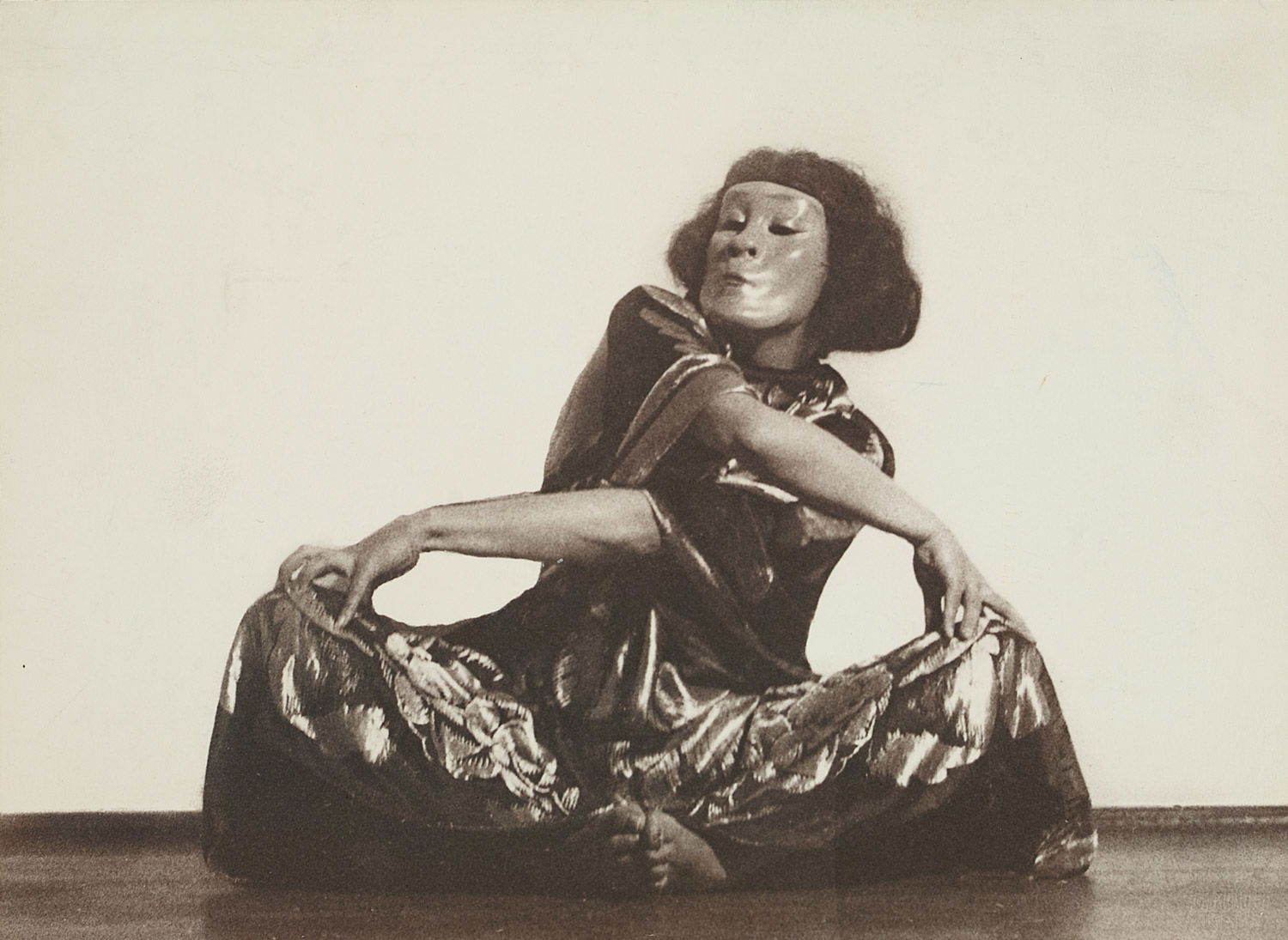
German expressionist dancer Mary Wigman- here doing her Hexendanz ( sitting down).
This community was inspired by a mix of theories from anarchists Bakunin and Mühsam ; the utopian socialists, Oedenkoven, Hofmann and the Gräser's, Hartmann and Pioda (vegetarian theosophists and humanists)and von Laban (theorist of the "reform of life"). The colonists "abhorred private property, practised a rigid code of morality, strict vegetarianism and introduced health aspects of the German freikörperkultur ( naturist) movement. They rejected convention in marriage and dress, party politics and dogmas. Funds came from Northern European nobility, fascinated by theories that aimed at the spiritual and physical elevation of man, also through the artistic expression of the body and the sexual revolution. The local inhabitants observed with perplexity, the nonconformist attitudes of the members of the community of the mountain . At the beginning of the twentieth century the Lombardy term balabiott ( "dancing naked"), was also used by the Ticino peasants to designate the community.
Of course the place attracted is own set of oddballs and charlatans, In 1917 the occultist Theodor Reuss and master of the Ordo Templi Orientis staged a conference on Monte Verità covering many themes, including societies without nationalism, women's rights, mystic freemasonry, and dance as art, ritual and religion, also addressed was the "ecstatic release" in the mysterious procedures on the "paths to enlightenment and prepared himself to seduce the colony's women. The colony director—Henri Oedenkoven, having had enough of the midnight erotic-orgiastic rituals that took place in Reuss' sham lodge, threw him out.
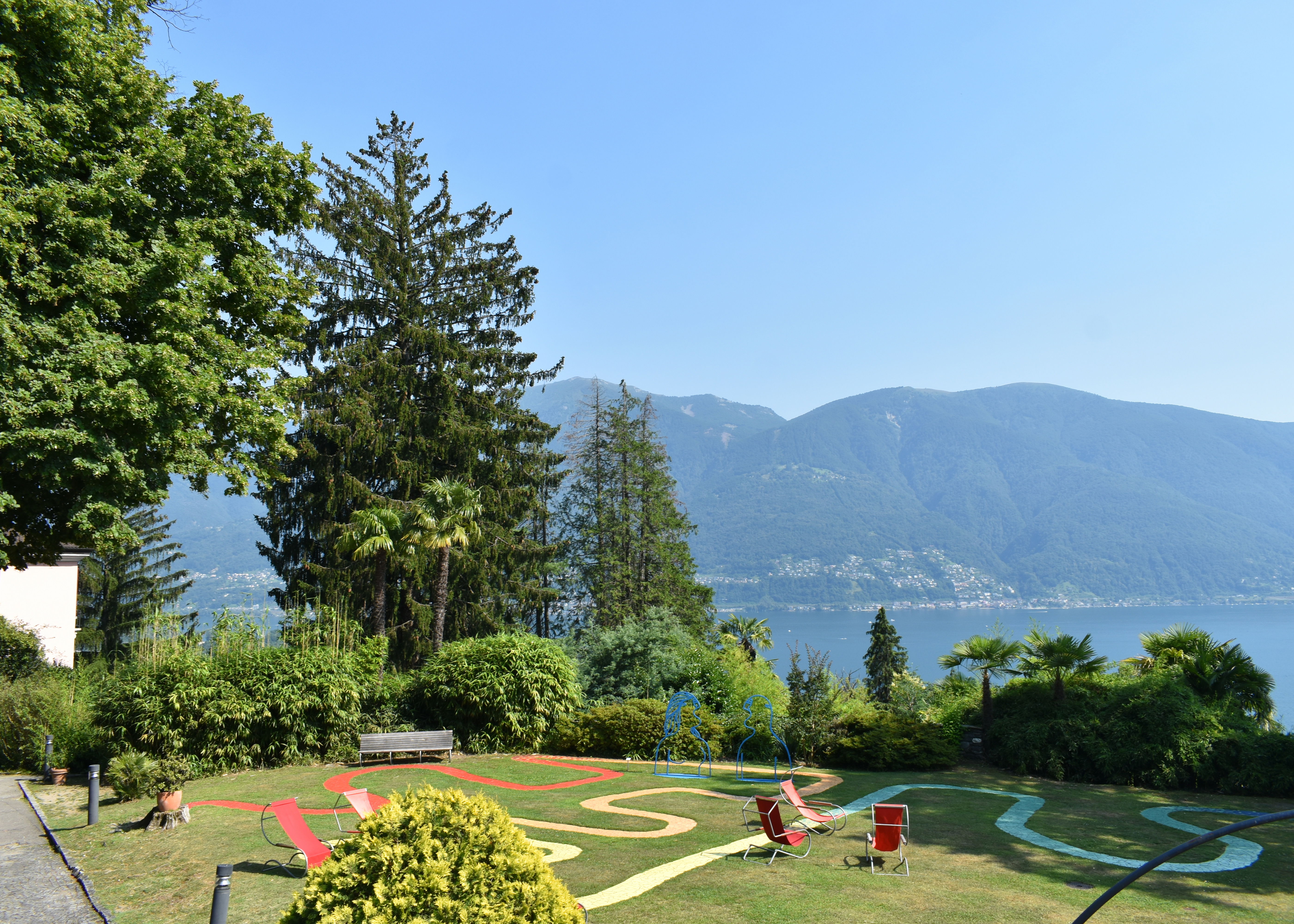
A splendid view from the terrace of the Albergo Monte Verità
If you are thinking you have heard of Monte Verità somewhere else, you have. It is the title of a short macabre story by Daphne Du Maurier, which you can read in the “ The Birds and other Stories”. As a total digression, having only seem the film, I also read the Birds. I am glad it was after I ate in a lakeside called Il Gabbiano,(the sea gulls) , the sea gull attacking in the story is pretty terrifying. Anyway, Du Maurier never says, where her Monte Verità is , She says: ‘
There are many mountain peaks in Europe, and countless numbers may bear the name of Monte Verità. They can be found in Switzerland, in France, in Spain, in Italy, in the Tyrol. I prefer to give no precise locality to mine’
In the story, seems that the mountain is rather high and takes a few hours to get to the top , the Ascona version is really only a fairly small hill and certainly requires no mountaineering skills to get up for a refreshment stop. Maybe it is more inspired by the community on the hill rather than the geography.
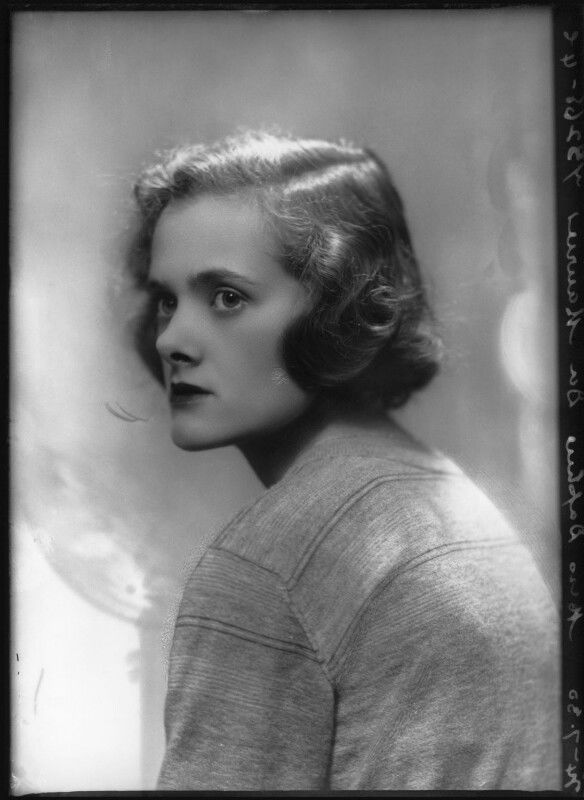
Daphne du Maurier- who may ( or may not have) have based her macabre short story of the same name on Ascona's Monte Verità
Although , the narrator is supposed to be writing some time after the Second World War , the story, begins in the 1910s at a time when the “alternative” communities had settled on Monte Verità. The narrator is best chums with Victor , they go mountaineering together. Then Victor falls for the impossibly beautiful Anna, who happens to be from Wales but has bever scaled Mount Snowdon. As well as being incredibly beautiful. Anna is a tad unconventional. On marrying Victor , she moves into his Shropshire country house and throws our all the chintz. She literally strips it to bare floorboards and then goes out walking barefoot in the frost covered garden , which the narrator finds a bit odd. Anna , who as we know has no previous interest in mountaineering, persuades Victor to take her climbing Monte Verità. The inference is that she has some mystical calling to go there. They set off, the locals warn them not to go ( possibly the suspicious Ticinese peasants ‘) but of course, being British they ignore this sound local advice. Anna duly disappears into the Monastery. After a brief reappearance to tell Victor she is not coming back, she vanishes and that appears to be that. Victor visits every year and leaves a note, he even finds time to do this each year during the war. The narrator goes off to pursue his fortunes in the United States.
Returning to the Europe in the 1930s , his plane crashes in the mountains. Coincidentally , it is near Monte Verità. Even bigger coincidence, he finds Victor desperately ill in a peasant shack and unable to deliver his annual note. The narrator promises to deliver it for him. Meanwhile ,another local girl has disappeared and the peasants are getting ready to storm the castle, like French peasants going after the Marquis de Sade or Hollywood peasants going after Frankenstein, they have had enough and ae tooling up with pitchforks and scythes. The narrator gets to the Monastery first. Anna reveals herself. Poor old Victor has been making the trip for twenty years and she has not come out. Yes the narrator as been holding a torch for Anna all this time and it seems to have been mutually reciprocated. Although. We are thinking that Anna has gone off to find peace , beauty and eternal life – the big reveal is that her beauty is now disfigured by leprosy. She tells the narrator to tell Victor, that he saw her and she was just beautiful as before . The narrator warns her that he peasants are revolting and offers to help her community find refuge elsewhere . she declines and disappears. The narrator finds Victor at death’s door and recounts the story. Victor dies and the angry peasants set off- Fin .
For my simple mind it is a pleasant if macabre little tale. Everybody finds what they are looking for . Others go far deeper. That the story is an allegory that takes us to the heart of German expressionism, hence, of modernism.
“The members of the community on Monte Verità experience happiness, laughter, a freedom of the body as well as connection with the sun and the moon.”
The worshipping of the sun and the moon is reminiscent of the rituals Lawrence introduces in his writings and are described in truly Lawrentian terms, du Maurier’s ‘blood stream’, for instance, being close to Lawrence’s ‘blood consciousness’, the naked dancing, the fusion with the cosmos and the glorification of the body being also reminiscent of his novels,
“ Du Maurier’s evocation of the community in Monte Verità, turns a would-be autobiographical narrative and supernatural story into a reflection on Modernism, the fascination and vulnerability of some modernist ideas, the way such ideas could lend themselves to and fuel the outrageous Nazi ideology. By refusing to set Monte Verità in a specific country and keeping all allusion to any specific artist submerged, she gave her short story a wider scope and turned it into an allegory of outrage and the ethics of outrage, “
After the Great War, Monte Verità never returned to its heady pre-war days. From 1923 to 1926, was operated as a hotel by artists Werner Ackermann, Max Bethke and Hugo Wilkens, until it was acquired in 1926 by Baron Eduard von der Heydt. The following year, a new Modernist-style hotel was built by Emil Fahrenkamp. Von der Heydt was another of those strange and interesting characters who turn up in Ascona. The place seemed to attract them. Heydt was the second son of an old and powerful banking family from Wuppertal. After a spell in a fashionable German Cavalry Regiment, he had studied in Geneva and then gone off to learn banking in New York and London. In London in 1908 , he had an epiphany and began collecting Buddhist Art. After that he was probably more interested in art than banking. In 1914, he left London to return to the German Army. The British confiscated his London Art collection. He was wounded on the Western Front and subsequently became a diplomat in neutral Holland. At the end of the war, he married the 18-year-old daughter of a Hamburg banking dynasty. Since von der Heydt was then 33 and a self-confessed homosexual, it seemed unlikely to last. He founded the Von der Heydt- Kersten Private Bank in Amsterdam and when inevitably he separated from his wife, he founded his own Private Bank in the Dutch resort of Zandvoort.
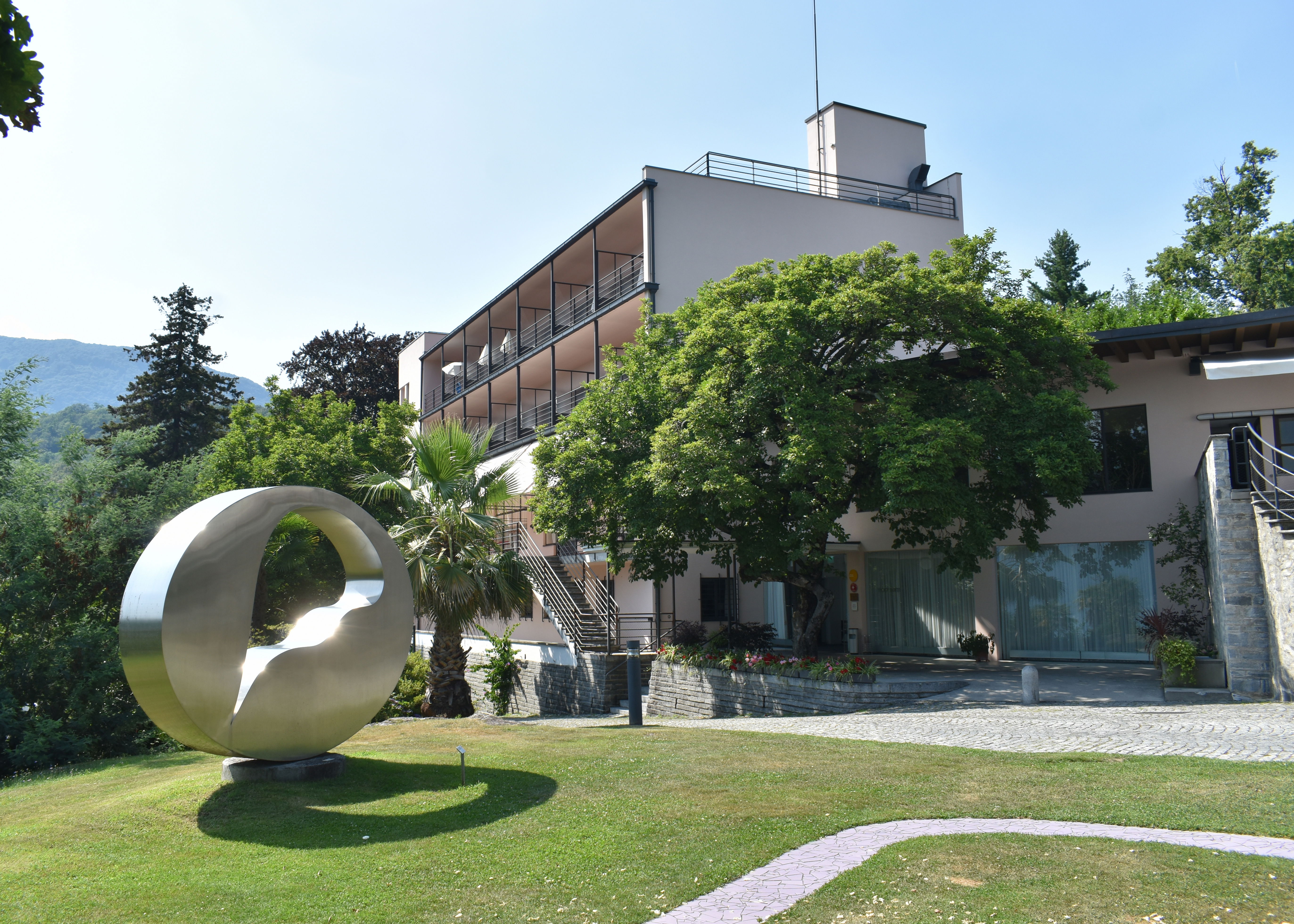
Emil Fahrenkamp's Bauhaus hotel at Monte Verità
Meanwhile von der Heydt had been taking advantage of his Dutch based private bank, to snap up bargains in inflation ravaged Austria and German. In 1926, the artist Marianne von Werefin introduced him to Ascona, and he purchased the site at Monte Verità. After the hotel was constructed, he lived at the Casa Anatta in the complex. His list of visitors read like an A List of German Society. The Thyssen brothers, the Kaiser’s son, Carl Jung, the sexual researcher Magnus Hirschfield, , actor Emil Jannings and politicians like Gustav Stresemann. At his level, it was inevitable that von der Heydt would come into contact with senior Nazis as well, He actually joined the NSDAP on 1 April, 1933, but tried to conceal the fact. Then he lost his wallet. Switzerland being Switzerland somebody handed to the police complete with his NSDAP membership card. In the end he became a Swiss citizen and lost his German passport and NSDAP membership. Despite that he seems to have continued some sort of dubious relationship with the German intelligence service, the Abwehr . At the end of the war, this bought him to the attention of the Americans, who pressured the Swiss to arrest him. He was later acquitted by a Swiss Court of any wrong doing. Around the same time he donated most of his Swiss based art collection to a Zurich museum.
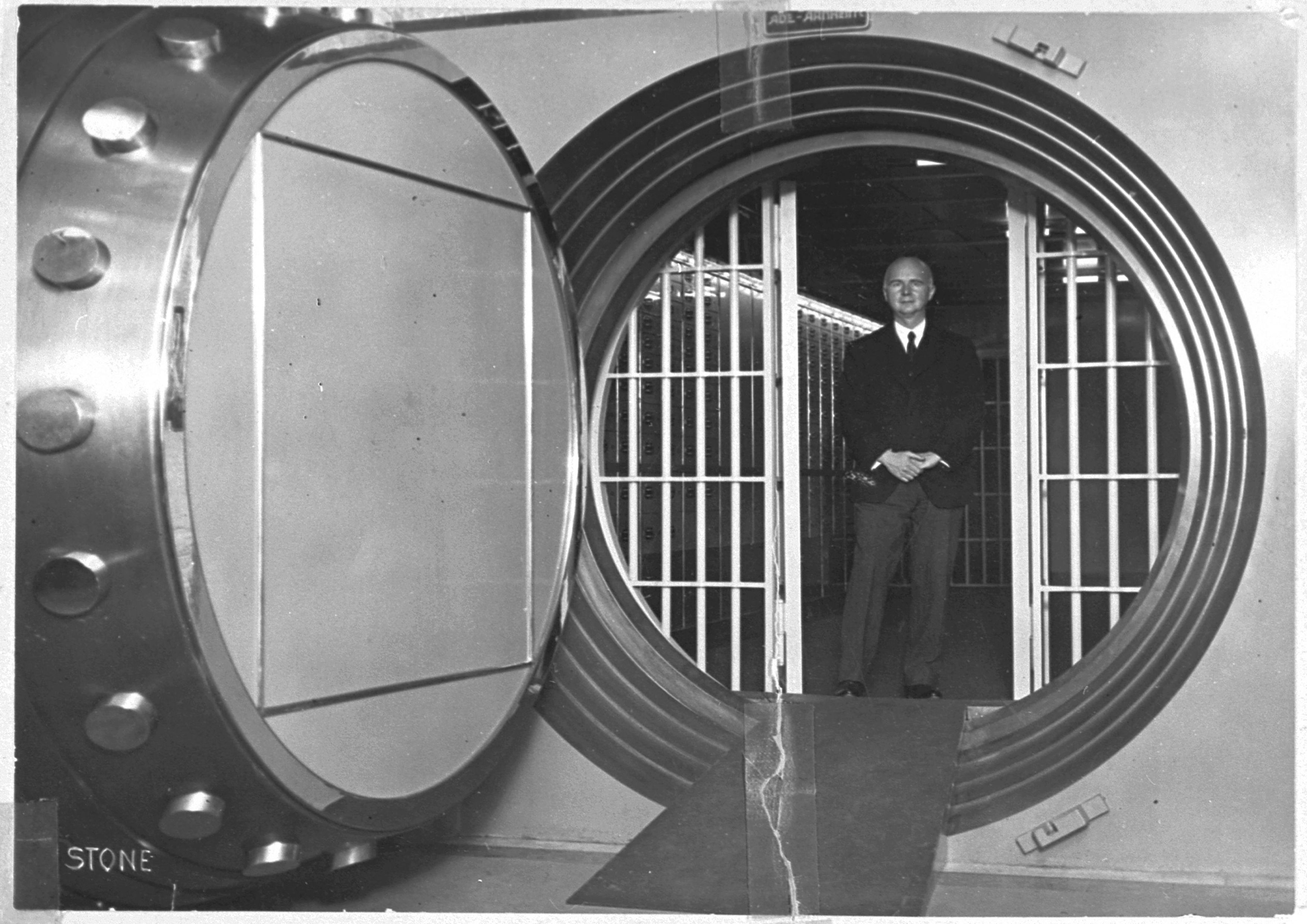
Eduard Von Der Heydt - banker, oriental art collector and post war owner of Monte Verita
in 1964 the site became the property of the Canton of Ticino. The various pre-war residents of Monte Verità went off to seek their Utopia elsewhere, or in the case of most of the anarchists to be murdered by the Soviets or the Nazis. Some of the Germans returns home , where there was an unfortunate cross over between the modern dance , theosophy, freikörperkultur and Nazism. Laban and Wigman ended up choreographing the dances at the Berlin Olympiad although to be fair they fell out with Goebbels over artistic differences and made quite van early break with Nazism.
After leaving Monte Verità , Erich Mühsam returned to Munich, he created his own newspaper, Kain, where he expressed his anarchist pacifism and opposed the. At the fall of the Bavarian monarchy, in November , 1918, he took part in the the socialist government of Kurt Eisner. During Bavaria’s post revolutionary White Terror , he was accused of high treason and sentenced to 15 years in prison, where he wrote his most important political works on anarcho-communism. Freed after five years, he resumed his intense activity until 1933 when, captured after the Reichstag fire, he was imprisoned in various prisons and concentration camps, He was murdered the following year in the Oranienburg concentration camp.

German anarchist Erich Mühsam, one of the founders of Monte Verità , murdered at Oranienburg Concentration Camp by the Nazis in 1934.
Maybe a few of Erich Mühsam's words might sum up Monte Verità
"The great evil from which humanity must be freed is the tendency to be pleased with consecrated formulas, which is then equivalent to a lack of confidence in one's own conscience. Once emancipated from blind and passive belief in formulas, man's wisdom can manifest itself freely. But then it will still struggle to rise from learned science to the wisdom animated by the pulsations of life."
So while pondering on theories of modernism , Victor’s never wavering love for Anna, deceased German anarchists and the dubious world of oriental art collecting , we can take some refreshments on the terrace of the Bauhaus hotel and admire some lovely views across the lake. Looking at the view, you can understand why our counter culturalists loved the place. The light, the lake, the palms mixed with the pines . If you are going to build Utopia it was a pretty nice place to try.

Spectacular views on the path from Monte Verità to Brissago
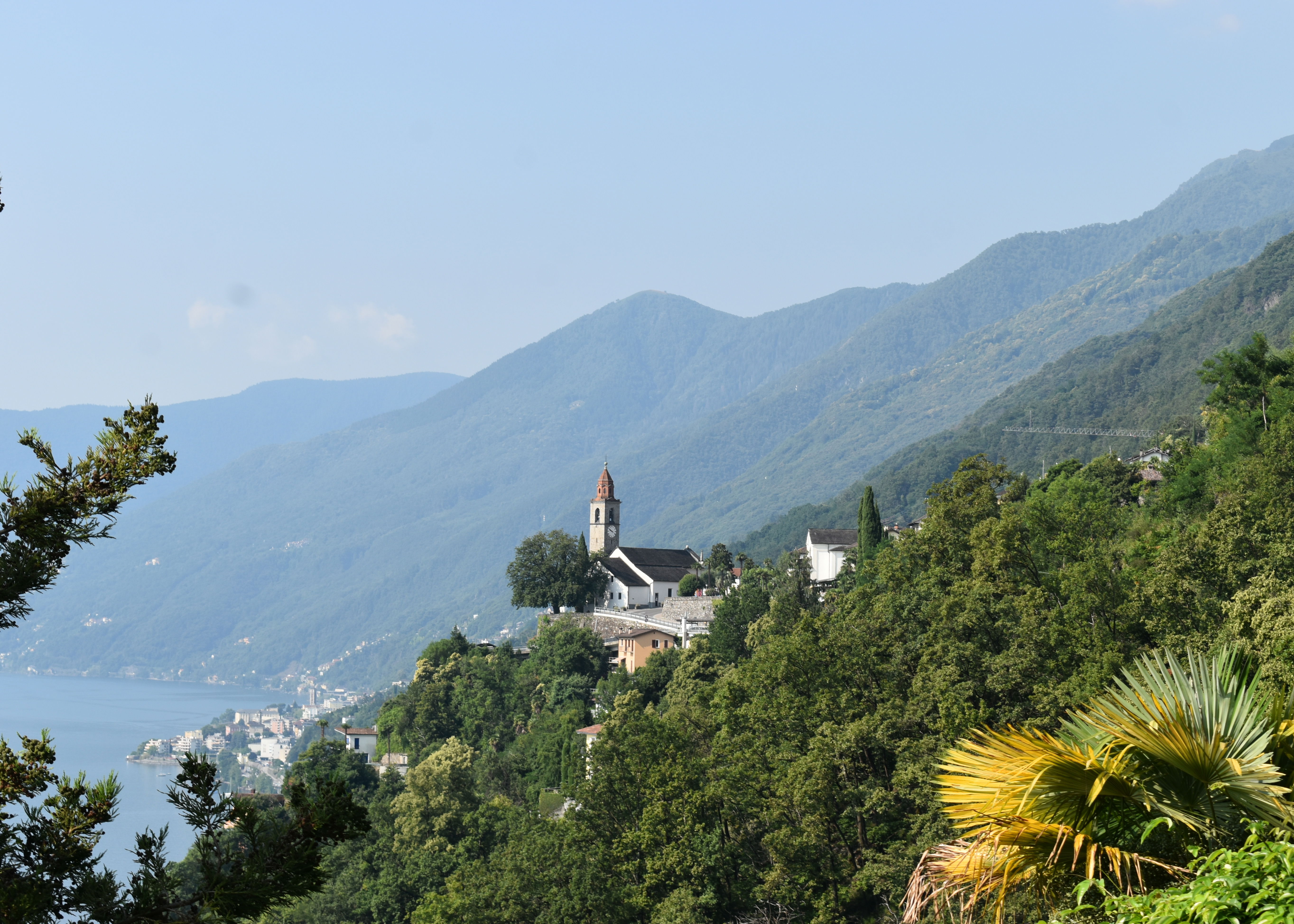
Ronca sopra Ascona-about half way there. Eric Maria Remarque lived there
Past, Monte Verita the Strada Collinetta leads towards Brissago along the lake side. This where another remarkable resident of Ascona established her Kinderheim ( children’s refuge) Lilly Volkart was born in Zurich in 1897. Her father was a teacher at the Kunstgewerbeschule (arts and crafts school )and her mother a Florist : After a spell as a secretary at a hospice for children in Zurich , she moved to Pars to study. In 1916, she opened a student hostel for students of the Polytechnikum in Zurich. In 1921 she started to work for Max and Minna Tobler-Christinger., who were both Zurich doctors, they asked her to move their children from Zurich to Ascona for health reasons. She decided to stay in Ascona and opened her own school. She did this at Casa Cedro, in Strada Collinetta at the house of Mia Hesse-Bernoulli (the estranged wife of the author) Hermann Hesse, who had moved to Ascona to recover from depression. In 1931 Lily acquired another property Casa Bianca at Strada Collinetta 40. Although the school is no longer there, it must have been a beautiful location overlooking the lake on the road to Brissago.
Lilly Volkart was one of the twenty women who in 1933 founded the Schweizer Hilfswerk für Emigrantenkinder ( SHEK) a national umbrella organisation for local groups. SHEK started by bringing the children of German parents who had emigrated to France for vacations to Switzerland: By the beginning of the war in 1939, SHEK had been able to arrange vacation stays of 6 to 12 weeks in Switzerland for 4,892 emigrant children, 2,574 from Germany and 2,318 from Russia. Swiss organisations also provided similar relief to Spanish children caught up in the Civil War. In November 1938, Georgine Gerhard and Nettie Sutro managed to obtain an exceptional permit for the entry of 300 Jewish children from Frankfurt (Main) , Constance and other communities in southern Baden .The children were still in Switzerland when the war started, which effectively saved their lives. In Ascona Lilly Volkart had originally started her school for wealthy children, expanded to underprivileged Swiss children and then to refugees. She was financially sustained by the exiled Jewish community in the Ticino, by Emil Ludwig, the exiled German author and biographer who had by then become a Swiss citizen, and the family of Clemens Oppenheimer an exiled German industrialist. It was not just financial help, Rolf Liebermann – who later become a famous composer acted as music teacher at the school .
During the war , numbers expanded following 8 September refugees started to arrive from Italy as well. In the end a total of nearly 4’000 children were sheltered , in the original house and then in an additional house at Monte Verità . Despite his somewhat dubious Nazi contacts, Eduard von der Heydt allowed her to convert one of houses on his estate. Refugee children from all nations came to Switzerland: German, French, Belgian, Polish and many Italians. Lilly’s home was placed under the Ticino section of SHEK. Christian children celebrated the Jewish festivals and the Jewish ones the Christian ones. The children who were in Lilly's home carried something with them of the spirit of love and goodwill that reigned in Lilly's house.
So we reach Brissago . Although there is some evidence of neolithic settlement , the village is first mentioned in 1289 as Brixago. During the Middle Ages the fortunes of the village were closely tied to those of the parish and court of Cannobio ( the nearest large Italian town). At the farthest reach of influence of Milan and Como, its relative isolation allowed it to develop into an Imperial community with great autonomy. By the middle of the 13th century, it had its own village law, with the first version appearing in 1289. The entire municipality was ruled by a Podestà, who was initially appointed by the Visconti family of Milan. in 1342, the Visconti added Brissago into the capitaneria of Lake Maggiore. Subsequently it became an Associate of the Swiss Confederation and then an independent political municipality in the new Canton of Ticino.
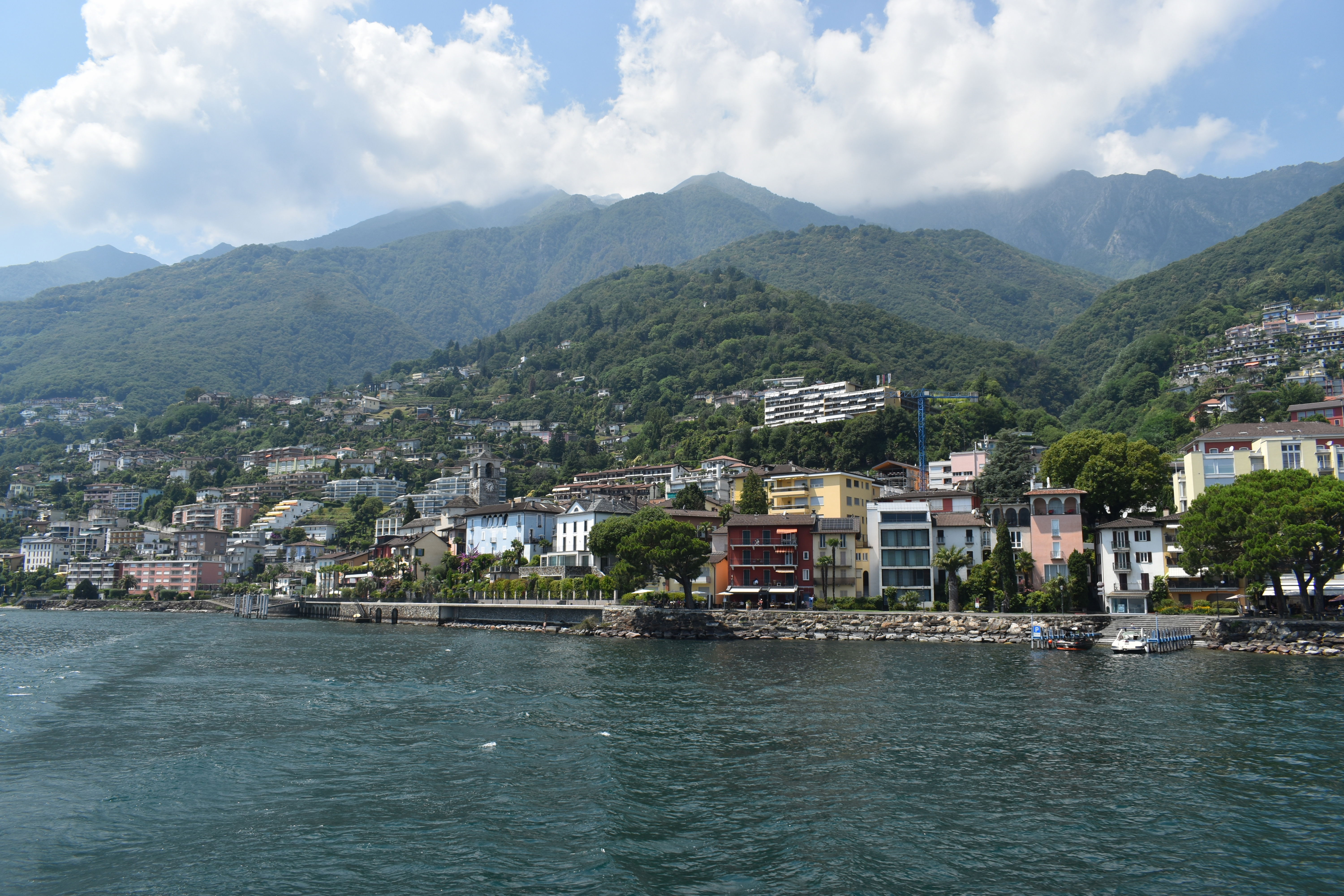
Brissago
During the Italian Risorgimento it was a refuge and centre of weapons smuggling and underground literature for the Lombard refugees. The village church was under the authority of the diocese of Milan as part of the old parish of Cannobio, following the Ambrosian Rite . The Church of SS Pietro e Paolo is first mentioned in the 13th century. The existing building is from the 16th to the 17th century, and it was restored in 1961. in the Middle Ages, the majority of the population worked in agriculture and animal husbandry. The shoreline and hill dwellers operated some fishing boats and some commerce and trade. Already in the 13th century there were mills, hammer mills and sawmills, as well as later lime kilns in the village. Starting in the 15th century, much of the population emigrated to Milan and Tuscany. The opening of a new tobacco factory in 1888 boosted the economy and decades of the more than 600 people, mostly women, employed in tobacco processing. During this time, the municipality also began to develop into a resort town with many second homes and hotels , including in 1907 the construction of the Grand Hôtel Brissago ( demolished in 1993). It now seems to have been replaced by a marina and retirement homes for wealthy Swiss. Its tragic how all these Belle Epoque Swiss hotels have disappeared. Some articles, suggest that Ernest Hemingway stayed at the Grand Hotel and also in nearby Locarno, but I could not find anything by Hemingway to conform that. Other esteemed guests are said to have include the German author Herman Hesse, he was well connected with the area as also crops up as a guest at Monte Verità .
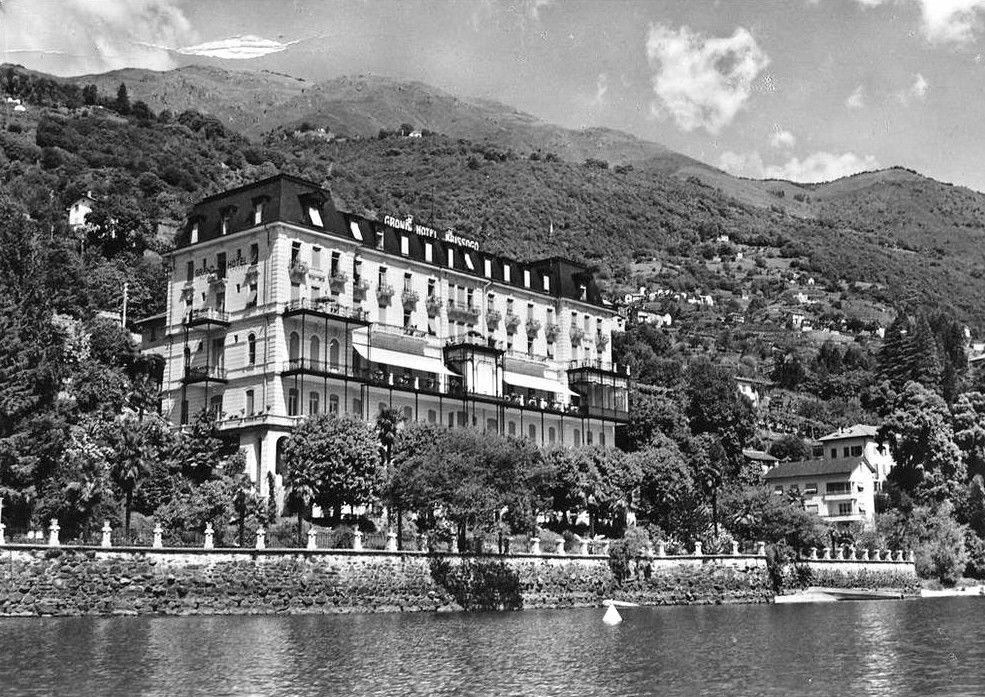
Sadly no longer with us the Grand Hotel Brissago
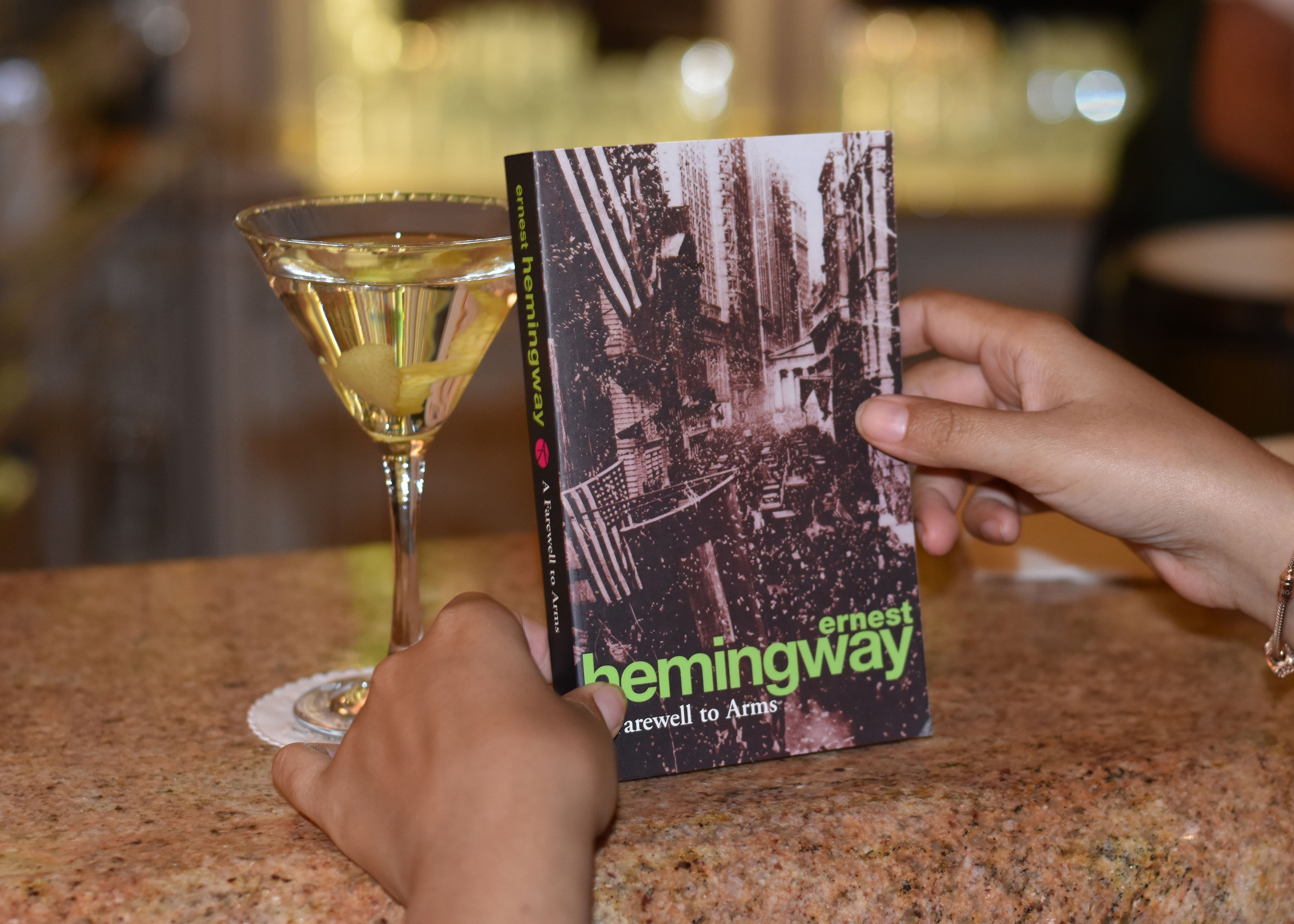
On the trail of Ernest Hemingway
Back to Hemingway and “A Farewell to Arms” . In Chapter 26, Lt Henry and Catherine Barclay are staying at the Grand Hotel Isles de Boromees in Stresa, Italy. Although, he is an American Henry has technically deserted from the Italian Army after the debacle at Caporetto, . Possibly not surprising in the face of stupendous military incompetence , he has had enough of the war.
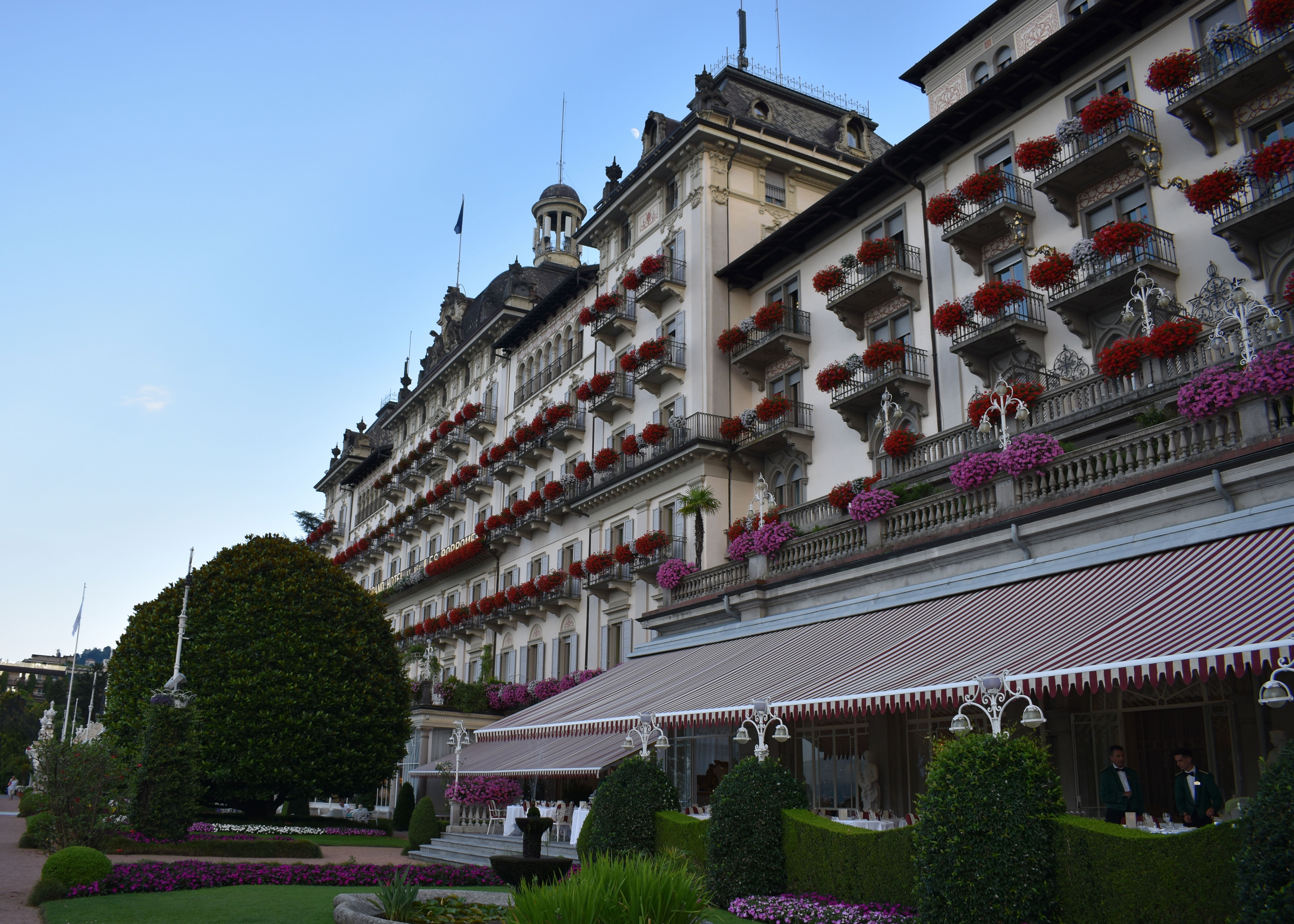
Grand Hotel Des Iles Borromees, Stresa
While playing billiards and drinking -martinis at the Grand Hotel , he learns that he is about to be arrested for desertion. The Italian barman at the hotel suggests that they should take his boat and flee for Switzerland. So they set off with some sandwiches m, and more importantly a bottle of brandy and a bottle of wine. Directions are a bit sketchy
Up the Lake” “Past Luino, Cannero ., Cannobio, Tranzano. You aren’t in Switzerland until you come to Brissago. You have to pass Monte Tamara”
“Row to Isola Bella. Then on the other side of Isola Madre go with the wind. The wind will take you to Pallanza. You will see the lights. Then go up the shore!”
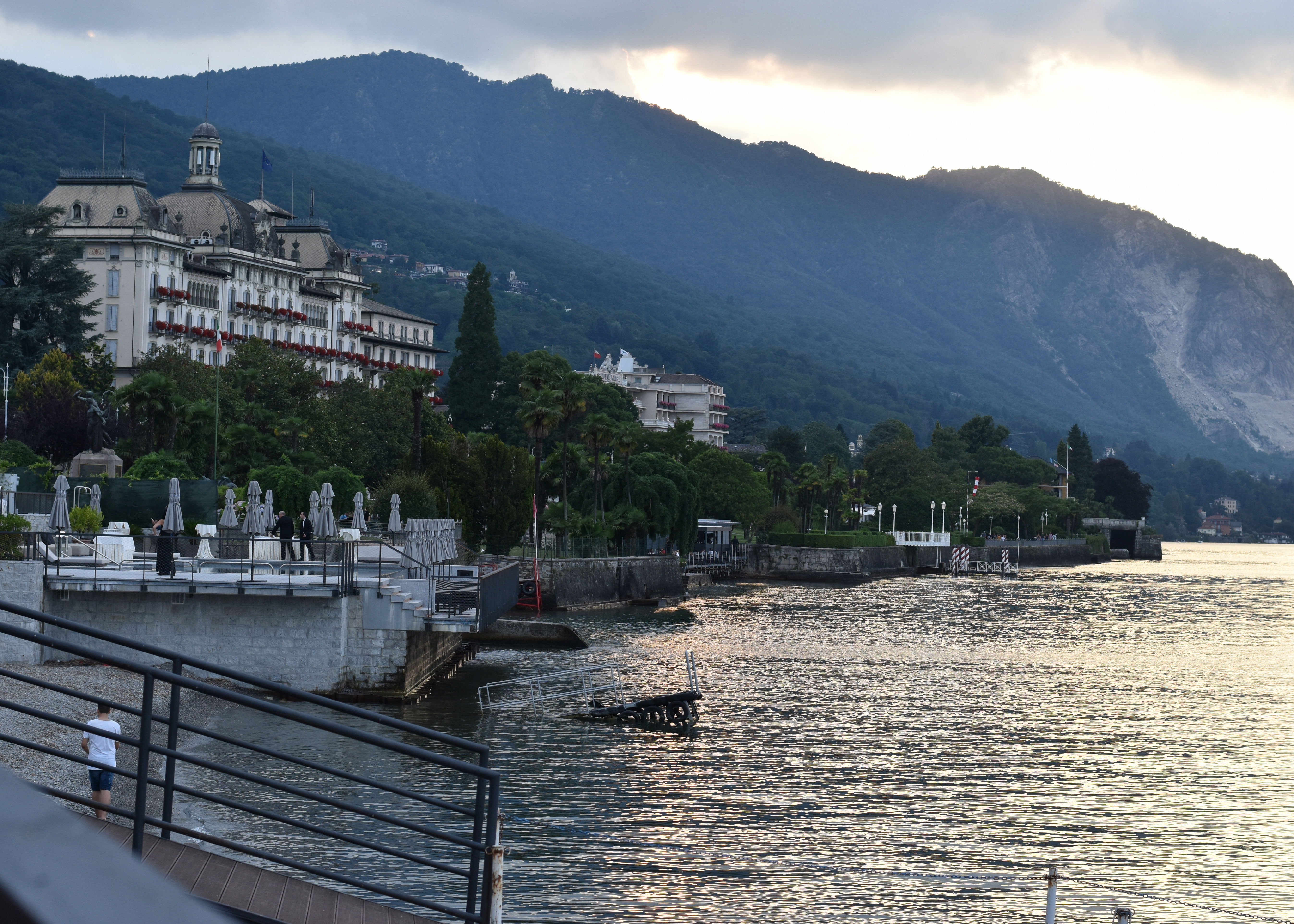
Lieutenant Henry and Catherine Barclay set off from Stresa to row to Switzerland
In Chapter 37, they set off rowing. The weather is bad and they miss the lights of Pallanza. Henry rows all through the night , until they reach a break in the mountains on the western side and deduce they must be passing Canobbio. As dawn breaks, they evade an Italian customs boat and are sure that they have arrived in Swiss waters. Henry could see up the shore away was a "village with stone houses, some villas on the hills and a church”. Henry is pretty sure that it is a Brissago, so they land for breakfast. After breakfast they are arrested by the Swiss, taken for questioning to the Custom House and sent to Locarno. , where having been released they stay for the night in the Hotel Metropol. So in a few lines in two chapters of “A Farewell to Arms , Brissago gets it literary connection .Apart from the church tower and the small dock where Henry probably left his rowing boat, Brissago would be unrecognisable to Hemingway these days.
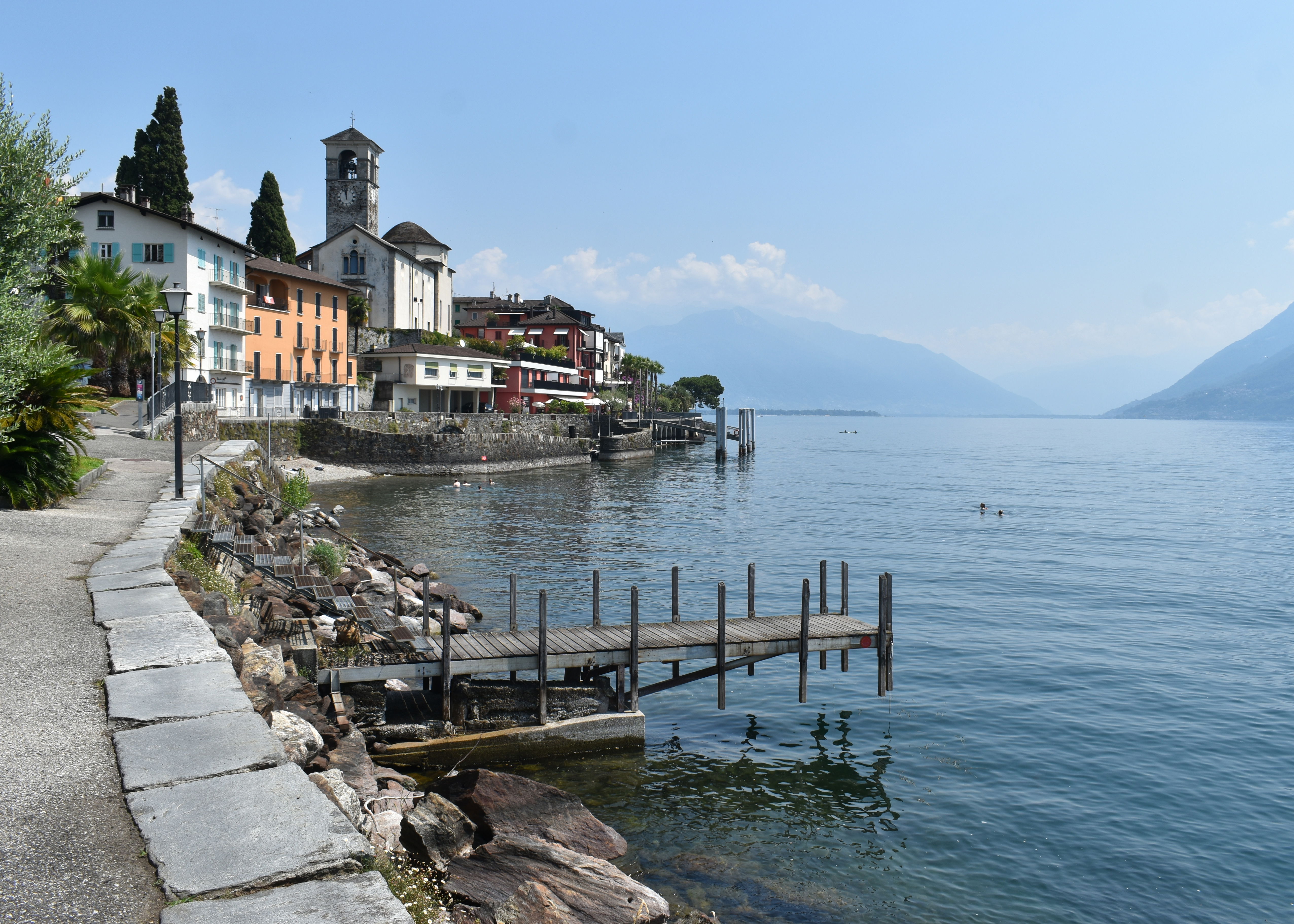
The view on arriving in Brissago
While the Hemingway connection is well known I had no idea of the connection between Brissago and H G Wells. In his novel The World Set Free (1914), Wells invents Atomic Warfare, thirty-one years ahead of time. Wells’ novel revolves around an (unspecified) invention that accelerates the process of radioactive decay, producing bombs which "continue to explode" for days on end. Having invented an atomic war, he invents a peace conference afterwards which he locates in Brissago.
"Nothing could have been more obvious to the people of the earlier twentieth century, than the rapidity with which war was becoming impossible … [but] they did not see it until the atomic bombs burst in their fumbling hands".
In 1932, the physicist and conceiver of nuclear chain reaction Leó Szilárd read The World Set Free . In 1934, he took his ideas for a chain reaction to the British War Office and later the Admiralty, assigning his patent to the Admiralty to keep the news from reaching the notice of the wider scientific community. He wrote, "Knowing what this [a chain reaction] would mean—and I knew it because I had read H. G. Wells—I did not want this patent to become public."
Wells' "atomic bombs" had no more force than ordinary high explosive and consisted of "lumps of pure Carolinum" that induce "a blazing continual explosion" with a half-life of seventeen days, so that it is "never entirely exhausted," so that "to this day the battle-fields and bomb fields of that frantic time in human history are sprinkled with radiant matter, and so centres of inconvenient rays." In the book, war breaks out between various Europe and Powers and they all have their hands on atomic bombs. By 1959 atomic war is spinning out of control. As Wells puts it
“By the Spring of 1959 from two hundred centres , and every week added to their number . roared the unquenchable crimson conflagrations of the atomic bombs, the flimsy fabric of the world’s credit had vanished, industry was completely disorganised and every city, every thickly populated area was starving or teetered on the verge of starvation. Most of the capital cities of the world were burning ; millions of people had already perished and over great areas government was at end. “
In the end the peoples of the world had enough , under the likely stewardship of the French ambassador in Washington, everybody gets together for a peace conference “ in the high alpine meadows above Brissago” which involved nine monarchs, the presidents of four republics and influential people from everywhere else. One of the heroes is King Egbert of England who gives up his throne in favour of a World Government . Effectively, the Brissago Conference becomes the Government of the World. After that
“ Ninety-three leaders of the world sat down with no precedency and at Brissago that proclaimed the unity of the world”.
So Brissago briefly becomes the centre of the world. Only the King of the Balkans holds out against the New World State but is swiftly bought on side. All supplies of Carolinium are given up, troops are sent home, English becomes the World language, a universal currency is established. And Utopia arises from the ashes. Wells might have been right abut atomic weapons, not so much about the rest. After the First World War, the Paris Peace Conference created more trouble than it solved, there was subsequent conference in nearby Locarno and “The Spirit of Locarno” held out hope but ultimately failed. The League of Nations was formed, but never aspired to being a World government. The Atomic war that happened was short and followed by another attempt at World Government at the United Nations. Nuclear proliferation continued and, in the end, only South Africa and the Ukraine , handed in there “Carolinium “, something which the Ukrainians probably regret. Brissago never became the “capital if the world” and today subsists on tourists and cigars. As we might say to Herbert George Wells “close but no cigar”
Wells certainly did know the Locarno area. In his Novel New Machiavelli he describers a trip to Switzerland , Wels slayed the Empress Hotel in Locarno and toured the surrounding area, it remains unclear why he chose Brissago for this historic role but it must have been from some knowledge of the area.
On 20/21 January 1945, the war arrived at Brissago in tragic circumstances, six escaped allied prisoners arrived at the lakeside, cold, hungry and exhausted after crossing the mountains from Italy, near the summit of Monte Limidario/ Gridone and then walking down to the village. These were real escapers not the fictional Lieutenant Henry . Worse they reported that ten of their comrades were still missing up in the mountains.
In the chaos which followed the Italian Armistice with the Allies on 8 September 1943, thousands of former Allied Prisoners War, walked out of POW work Camps on the North Italian plain. Among them were South African Riflemen John F Welch and his brother Rifleman Edgar Aubrey Welch of the Kaffirian Rifles. They had been captured at the fall of Tobruk in 1942. After being held in the hellish transit camps in Libya, the Italians shipped them to the mainland campo PG 65 at Gravina in Puglia. In March 1943, with so many Italian men away at the front or in British POW camps, the Italians started using POWs for agricultural labour. The brothers were shipped hundreds of miles north to a work camp PG146/ 1 Castello D’Agogna near Mortara in the rice fields south west of Milan. Here they met up with another South African, Private Douglas Clarke of the Umvoti Mounted Rifles. Clarke was a former farmer from the Nkwalini Valley in Natal,, who had been mobilised with the local regiment the Umvoti Rifles in June 1940 and had been sent to Egypt with the South African 2nd Division. He had also been captured at the fall of Tobruk Following the Italian Armistice on 8 September, the commandant opened the camp gates and let the prisoners go,. The South Africans stayed in the area for nearly a year ,hiding out and getting food from friendly Italian. By November 1944, the Germans and the Fascist Militias of the RSI were conducting sweeps for partisans and escaped prisoners in the area and they decided to head north to Switzerland , the group was escorted by partisans to Lake Orta , where they were joined by further escaping POWS. The group now added another South African Charles van Rensburg, , three downed American fliers, two new Zealanders ( Privates RR Cameron and W Frist) , two Australians ( Corporal J W Rowe and Private R Jackson) and five Soviet prisoners.
The three Americans were from an American B-26 “Marauder” Bomber of 320 Bomb Group which had been shot down near Novara, Italy. ( For more on 320 Bomb Group, readers might like to read the story of Heinz Thannhauser). In September 1944, the 320 Bomb Group was based at Decimomannu in Sardinia and was flying bombing missions against road and rail communications in northern Italy. On 4 and 5 September, the campaign had switched to the north Italian city of Pavia , targeting the road and rail bridges across the Ticino, including the historic Ponte Ticino. On the morning of 5 September, the B26 nicknamed “Baby Shoes” set off for Pavia. The plane was flown by Captain Luther K Moyer. It headed North from Decimomannu to cross the Gulf of Spezia and then ended north towards Tortona. Sometime after crossing the river Po the plane was hit by anti-aircraft fire damaging the engine. Captain Moyer tried to keep flying , perhaps with the hope of landing in Switzerland, but the plane was too badly damaged. In the end the crew bailed out and the plane crashed near to Novara killing Moyer. Three of the crew were captured in the area. Donald Lundgren, John J MGowan and L J Hoyne managed to evade capture and were helped by the Italian partisans to get north towards Lake Orta.
In January 1945, with Italian guides, the group of former prisoners set of for freedom, From Orta, they were guided across country towards the shores of Lago Maggiore .Avoiding Cannobio and the lakeside, which was heavily guarded, they headed up into the val Cannobio and then up into the mountains towards Monte Limidario and the border. They reached a hut below the summit pf Monte Limidario which marked the fronter and the Italian guides explained the route down to the lakeside. Although in Summer , Monte Limidario/ Gridone is an excursion trek, it is at an altitude of 2000 metres, and therefore in winter not to be taken lightly . By the time then men got to the summit, they were already suffering from the cold and exhaustion. Six men went ahead and walked down to Brissago without problem, The other ten were stopped by two Swiss border guards .who were convinced that the men were Italians and sent them back. The guards were Swiss Germans recently deployed in the area, who apparently spoke little if any Italian or English. The exhausted prisoners tried to convince the Swiss that they were Allied escapers. The Swiss allowed the prisoners to head for a nearby shelter, the two Swiss border guards then said they were going off to get help and disappeared. Unfortunately the trek in the dark to the refuge proved top much. Private Douglas Clarke and Sergeants Lundgren and McGowan succumbed on the mountain to cold and exhaustion.
The Swiss sent out a search party the next day and recovered the bodies, the raining prisoners made it down to Brissago as conditions improved the following day. The deaths of the three mean and the unfortunate circumstances in which they had been turned back by the Swiss border guards, caused an awkward moment between the Americans and the British authorities and the Swiss. Brigadier General Henry Antrobs Cartwright, the British Military Attaché in Bern, took up the cause of the South African ,, Clarke. As soon as they had been freed from Swiss quarantine, he took statements from the surviving Commonwealth solders. To Cartwright there was a strong case for negligence by the Swiss. The Minister at the British Legation in Bern pursued the matter with the Swiss. The Swiss investigated the circumstances and their report was regarded as being a bit of a whitewash and did not satisfy the Allies. The Swiss blamed a combination of unfortunate circumstances, including bad weather, lack of local knowledge and language difficulties for the unfortunate events . They resolutely refused to blame the soldiers involved. . Cartwright particularly objected to the fact that the Swiss had not taken into account any of the affidavit by the surviving escapers. In the end, the Americans had slightly bigger concerns they were engaged in complex negotiation to persuade the Swiss to reduce all their trade and transport links with Germany and the In the end the responsibility of who was responsible for the deaths was not pursued.
The surviving prisoners were evacuated from Switzerland tp France ad then the UK. The South Africans were sent back to Cape Town. Private Clarke was buried at the Commonwealth War cemetery in Vevey on Lake Geneva. Sergeants Lundgren and McGowan were originally buried in Switzerland and then taken home and buried in the United States. Not all escapes to Brissago ended well.
So having exhausted Hemingway and H G Wells we can now take the ferry across to the Brissago Islands. There are actually two of them. Seen from the road above , they look pretty small. San Pancrazio (also known as Grande Isola) is larger.[ The smaller island is known as Isolino, Isola Piccola or Isola di Sant’Apollinare. Both benefit from the mild climate provided by the lake. Both San Pancrazio and Sant'Apollinare, are about a kilometre from the shore and both average 7 metres above lake level . The islands were used as a refuge by early Christians. In the thirteenth century nuns of the Humiliati order built a convent on San Pancrazio,. After the suppression of the Humiliati in 1571,the islands became uninhabited. The island of Sant'Apollinare was under the Ambrosian Rite, while on the Isola Grande (Church of S. Pancrazio), which belonged to the parish church of Locarno and the territory of Ascona, the Roman Rite was followed.

Arriving at the Grande Isola
In 1885 an Anglo-Irishman of the aristocratic Saint Leger family, Richard Fleming, and his Saint Petersburg-born wife Antoinette purchased the now deserted Brissago Islands, covered with vegetation and the remains of the old convent. Antoinette was alleged to be an illegitimate daughter of Tsar Alexander II and is said to have been ordered to leave Russia on 48 hours' notice. Some things don’t change. Perhaps she is best described as enigmatic, no one really knew where she came from, other than her father must have been wealthy since he had sent his daughter off with a governess to Naples for health rehabilitation and to learn Italian. On San Pancrazio, Fleming and Antoinette renovated the old convent into a home and Antoinette began to create a botanical garden, which required bringing by boat to the island earth, plants from around the world and gardeners. Fleming, who possibly was not such a great horticulturalist abandoned his wife on the island in 1897 and moved to Napes where he worked as a diplomat at the British consulate, he died in 1922. Antionette remained and continued to develop the botanical gardens. Her island residence became a centre of intense cultural and business activities.
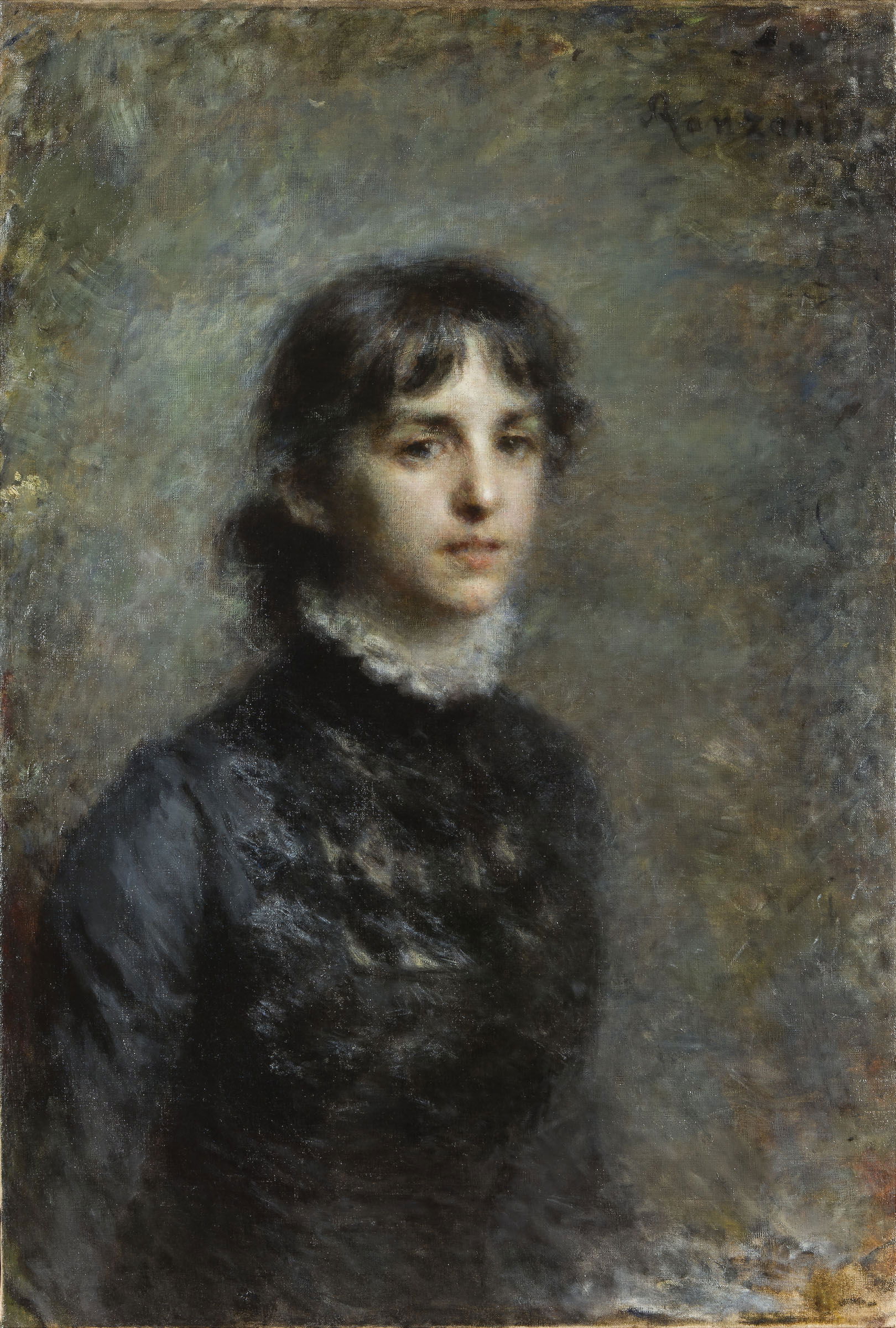
Baroness Antoinette de Saint Léger who created the gardens on Grande Isola
Between 1886 and 1914, Baroness Antoinette de Saint Léger hosted the painters Daniele Ranzoni, Filippo Franzoni and Giovanni Santini and the composer Ruggero Leoncavallo. After World War I, she also hosted Rainer Maria Rilke and Harry Graf Kessler. In 1919, James Joyce, who at the time was working on his novel Ulysses, visited the island: He was staying in Locarno and learned that the baroness, had scrolls on her walls painted with scenes from the Odyssey which he wanted to see. After the War, Antoinette was deeply in debt due to failed business ventures and a-risk y investment portfolio. She even began to engage in smuggling between Italy and Switzerland, for which her islands were an ideal base. Antoinette was forced to sell the islands in 1926 and moved to Ascona and then to Intragna, where she died in 1948.
Antoinette sold the islands to Max Emden, son of a Jewish merchant family from Hamburg After university and military service, Emden worked in the family textile trading company M. J. Emden Söhne becoming a partner in 1904 and later sole owner. The company expanded internationally under Emden, becoming a major department store chain including include the KaDeWe in Berlin, Corvin Áruház in Budapest, Allas in Stockholm, and Oberpollinger in Munich. At the age of almost 50, Max sold most of his company holdings and withdrew from most of his commercial activities, apart from the administration of his property holdings and foreign department stores. , Emden wanted to start a new life, he was estranged from his wife , and both had decided to divorce but wanted to remain good friends. There was also a new woman in Emden's life who he wanted to marry, , however she rejected him for being Jewish.

Max Emden who took over the Stewardship of the Brissago Islands
Having considered suicide , Emden moved to Ticino instead. In Ascona, he was a guest of Baron Eduard von der Heydt on Monte Verità . Apparently, Emden's old friend, the famous violinist Bronislaw Huberman, wanted the smaller of the two islands for himself and suggested Emden buy both. . At first, the baroness was prepared to sell the islands to anyone who would pay off her mortgages and other major debts, which amounted to some 500,000 Swiss francs. Allegedly on finding out how wealthy Emden was, she increased the price overnight, incurred new personal debts and engaged local craftsmen to submit false invoices to increase the estate's arrears. In the end, the islands cost Emden 1.5 million Swiss francs. The baroness continued to create difficulties for Emden, by refusing to leave in the end he has to evict her with the bribe of a few houses for her in Ascona which cost another 55,000 Swiss francs.
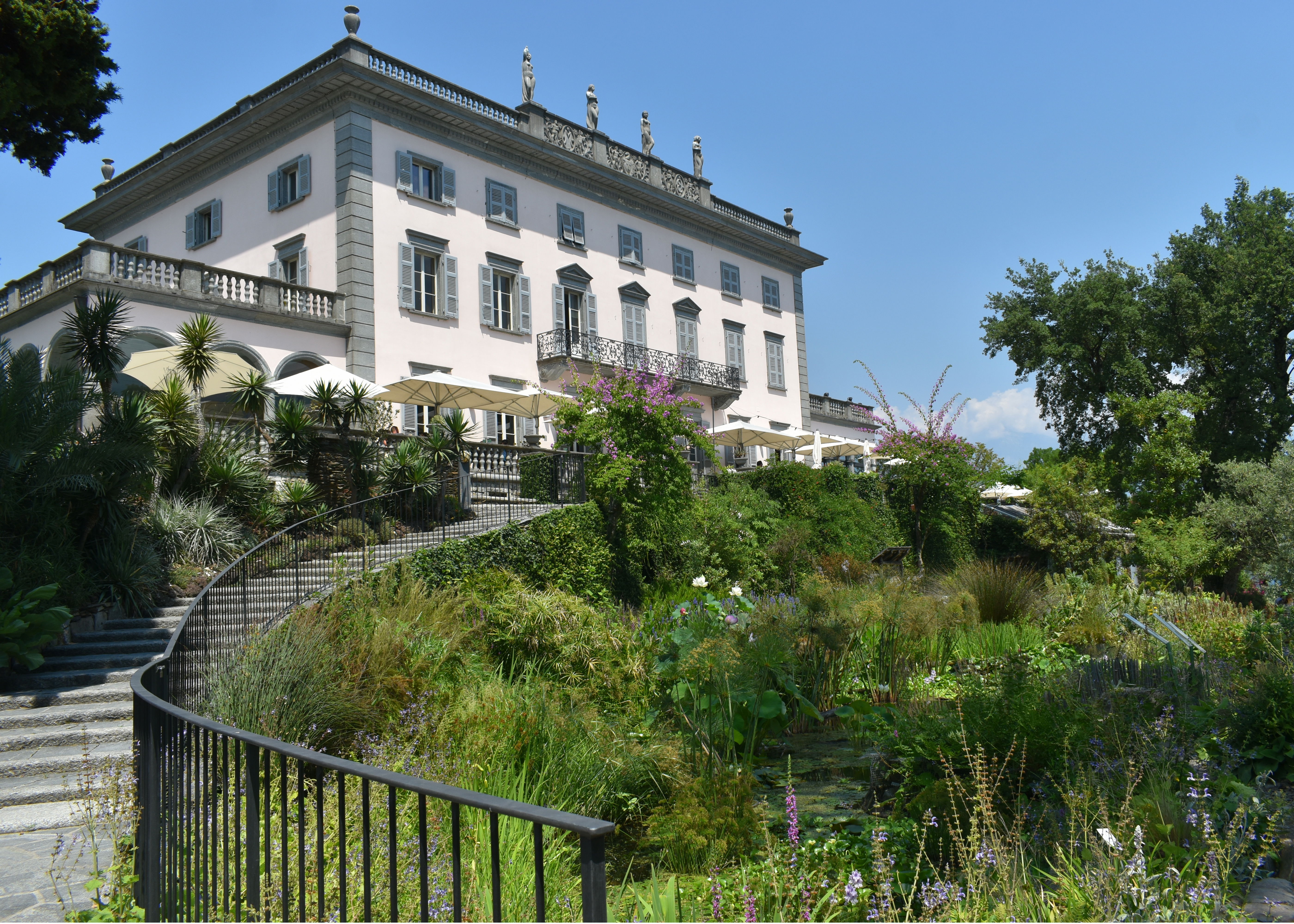
The Villa Emden
Having evicted the Baroness, Emden's had the old Convent blown up, and replaced it with a Palazzo style 24-room villa, finished with a luxurious interior, designed by the Berlin architect Alfred Bressler. Emden installed electricity and telephone to the island for another 100,000 Swiss francs., had the gardens renewed and the marina expanded with a flotilla of thirteen motorboats. Emden included a 33-meter-long Roman-style bathing pool decorated with the statue The Bathers by the sculptor Georg Wrba. He continued to preserve and maintain the botanical gardens. Persecuted in Nazi Germany because of his Jewish origins, Emden lived on his Brissago Islands from 1933 and surrounding himself with young women, including his devoted 18-year-old Brazilian girlfriend and parts of his art collection that had been rescued from Germany. Emden was a passionate golfer "Ascona owes the creation of its golf course" to Emden and von der Heydt. In 1934 Emden acquired the Swiss civil rights (Bürgerrecht) from the municipality of Ronco sopra Ascona, which is adjacent to the Brissago Islands, but could not secure the same for his son Hans Erich. His island residence was visited by numerous celebrities, such as Aga Khan III, the King of Siam , members of the German nobility, the his good friend Erich Maria Remarque and his wife and her entourage. Despite this rather pleasant-sounding life, we should not forget that Emden was in involuntary exile and the Nazis continued to seize his assets in Germany and “Aryanise” "his land and parts of his business.
Emden had to start selling the works of art he had brought to Switzerland including several paintings by the Venetian Bernardo Bellotto, which went to the Adolf Hitler's collection and from there to the possession of the Federal Republic of Germany. On 26 March 2019 Germany's Advisory Commission on the Return of Cultural Property Seized as a Result of Nazi Persecution recommended that the paintings "The Moat of the Zwinger in Dresden" and the "Karlskirche in Vienna" (both by Bernardo Bellotto) be restored to his heirs of Dr Max James Emden. In its decision, the Commission stated:
"The systematic destruction of people's economic livelihoods by the Third Reich as a tool of National Socialist racial policy (and precursor to the Final Solution) thus also applied in the case of Max Emden.".
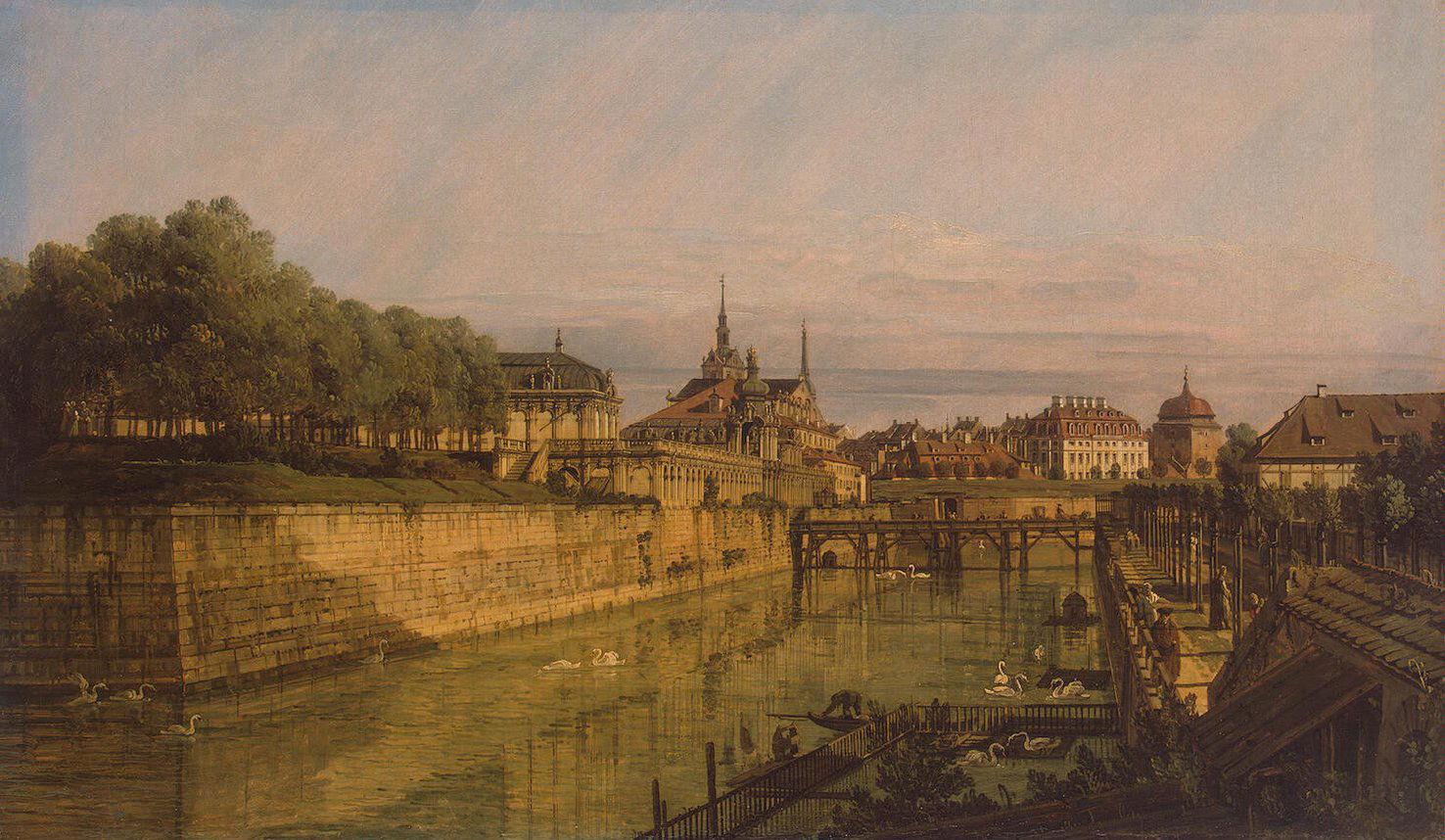
"The Moat of the Zwinger in Dresden" originally owned by Emden it ended up in Hitler's personal collection
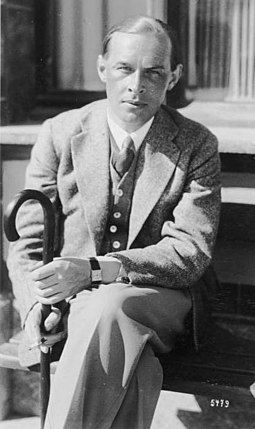
Erich Maria Remarque, friend of Emden's and another exie on Lago Maggiore
Emden was not the only German exile in the area, His friend Erich Maria Remarque, had been conscripted into the Imperial German Army in November 1916 in the 78th Infantry Regiment of Osnabrück . On 26 June 1917 he was assigned to the 15th Reserve Infanterie-Regiment Regiment No. 15), second company, "and fought in the trenches in Flanders. He was wounded by shrapnel in his left leg, right arm and neck and was repatriated to Germany 7. On 7 November 1918 he was judged fit for service again just in time for the Armistice. After the war he tried many jobs, librarian, businessman, teacher. And sorts journalism. In 1929 he published Im Westen nichts Neues " "All Quiet on the Western Front" a novel describing the utter cruelty of war through the perspective of a nineteen-year-old soldier. It sold one million copies in the first five months and became an international success of astonishing proportions; In 1933 the Nazis burned and banned Remarque's works, while circulating rumours that he was descended from French Jews Not surprisingly Remarque moved to Switzerland and in 1939 to the United States Where, despite being married he continued a stormy romantic relationship with Marlene Dietrich, which had begun in 1937 at the Lido of Venice.
Although Emden was not a gardening fan, he kept the gardens going. They cover an area of 2.5 ha (6 acres) and include over 2,000 taxa from Mediterranean or Subtripocal biomes : the Mediterranean Basin, the Cape region of South Africa, the Californian coast, the south-eastern coasts of Australia, and central Chile. Other areas are dedicated to China. Japan and Korea with extensivecollections of bamboo. It really is a wonderful place. Apparently the garden is managed according to Botanic Gardens Conservation International (BGCI) guidelines and is a member of the International Plant Exchange Network (IPEN), supporting scientific research in the field of botany and protecting biodiversity. So quite a legacy,
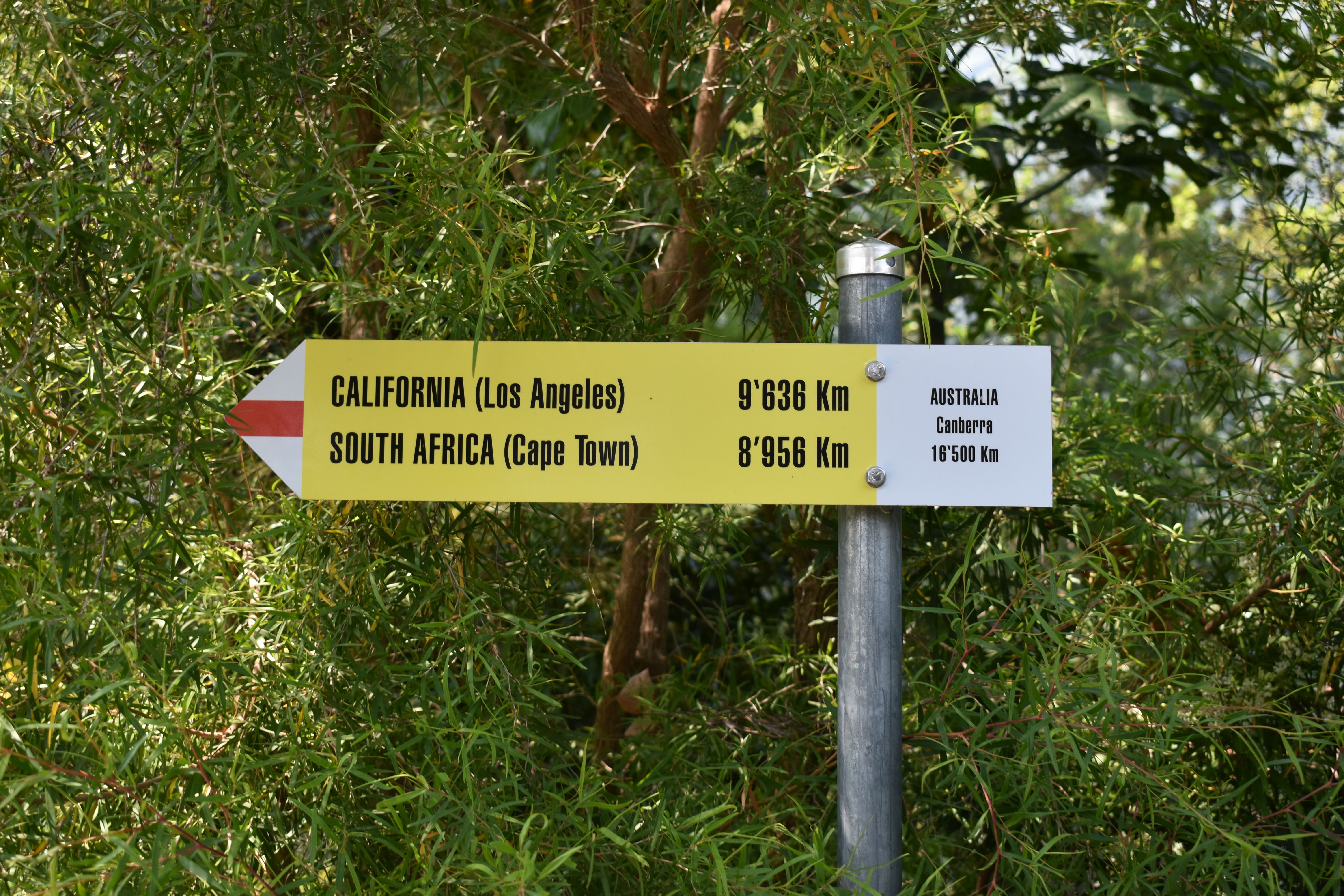
All the world in one garden
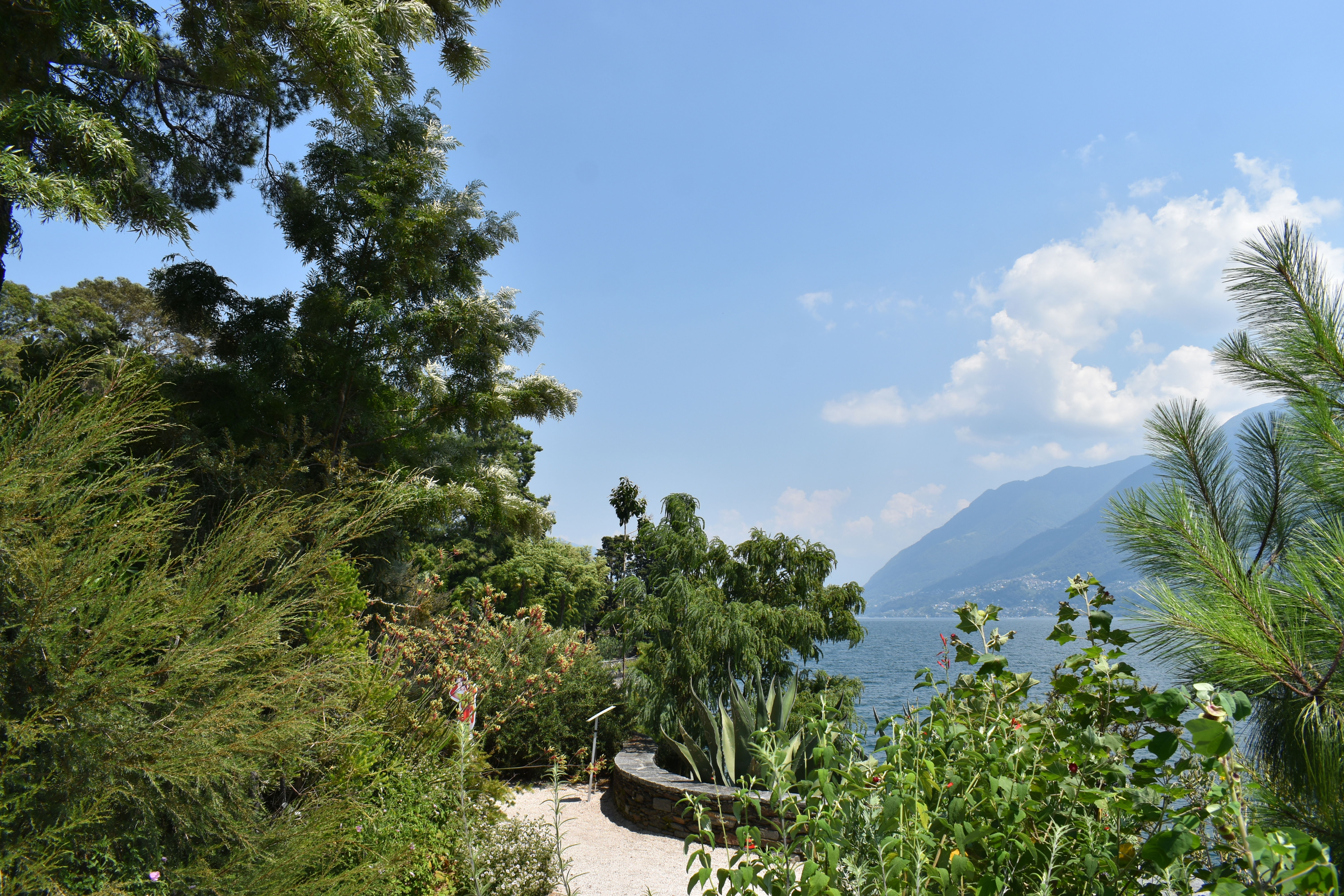
Strolling round Grande Isola
A quick tour of the flora begins with Mediterranean Europe at the northern point of the island, continuing through Australian forests of eucalyptus and acacia, followed by Proteaceae and Restionaceae, which give a taste of the South Africa . Then you you enter the Americas, with Araucaria, Nothofagus and Jubaea from Chile, while in the distance the large agaves and prickly pears anchored to the rocks transport you to Central America. . In the centre is a collection of ferns, which gives an impression of what forests looked like 300 million years ago, when there was no fruit, and flowers were still rare. There, in the semi-darkness and amidst the thick green of the ferns, dominated by Dicksonia antarctica, you can still glimpse some living fossils.
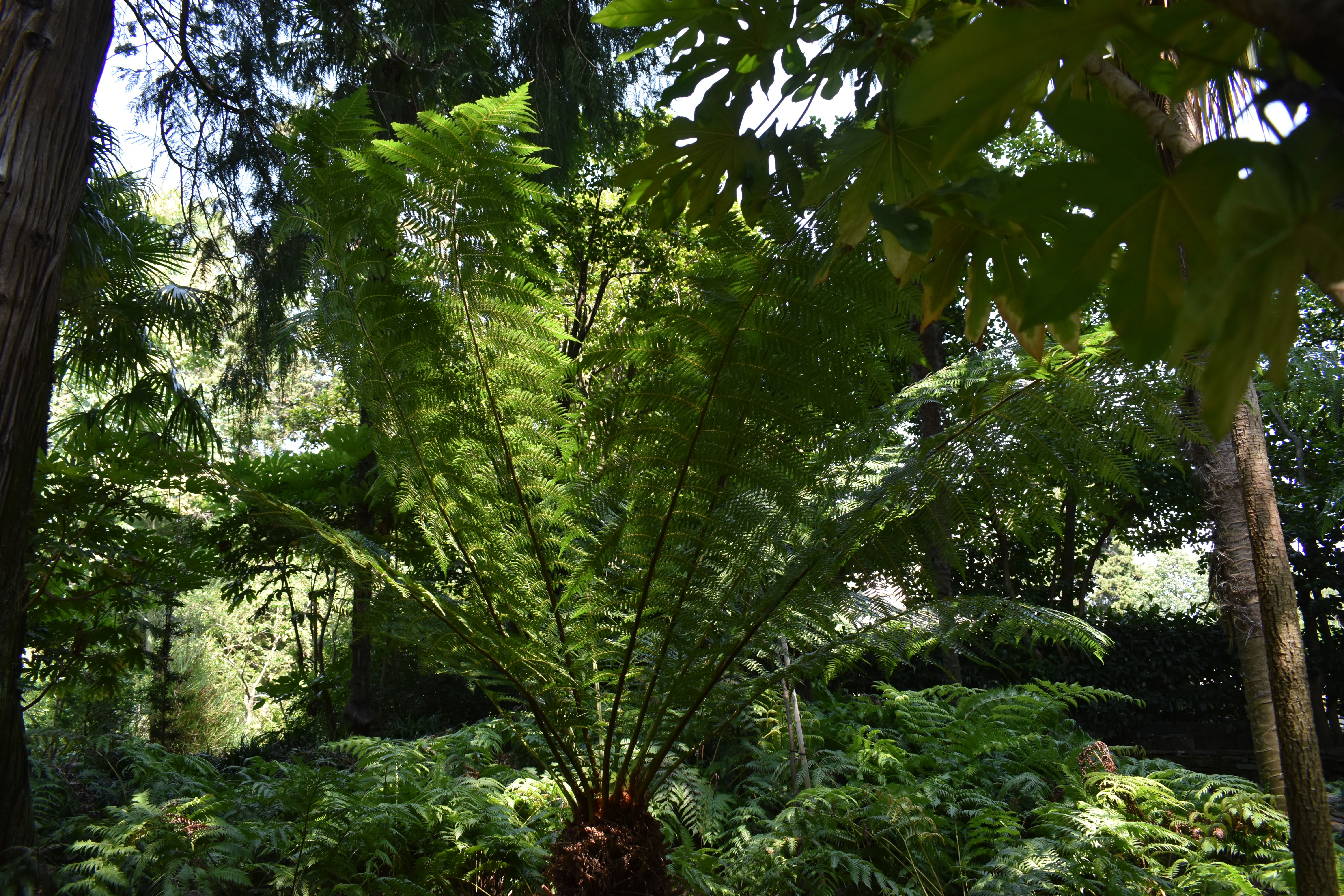
Jurassic " plant" park
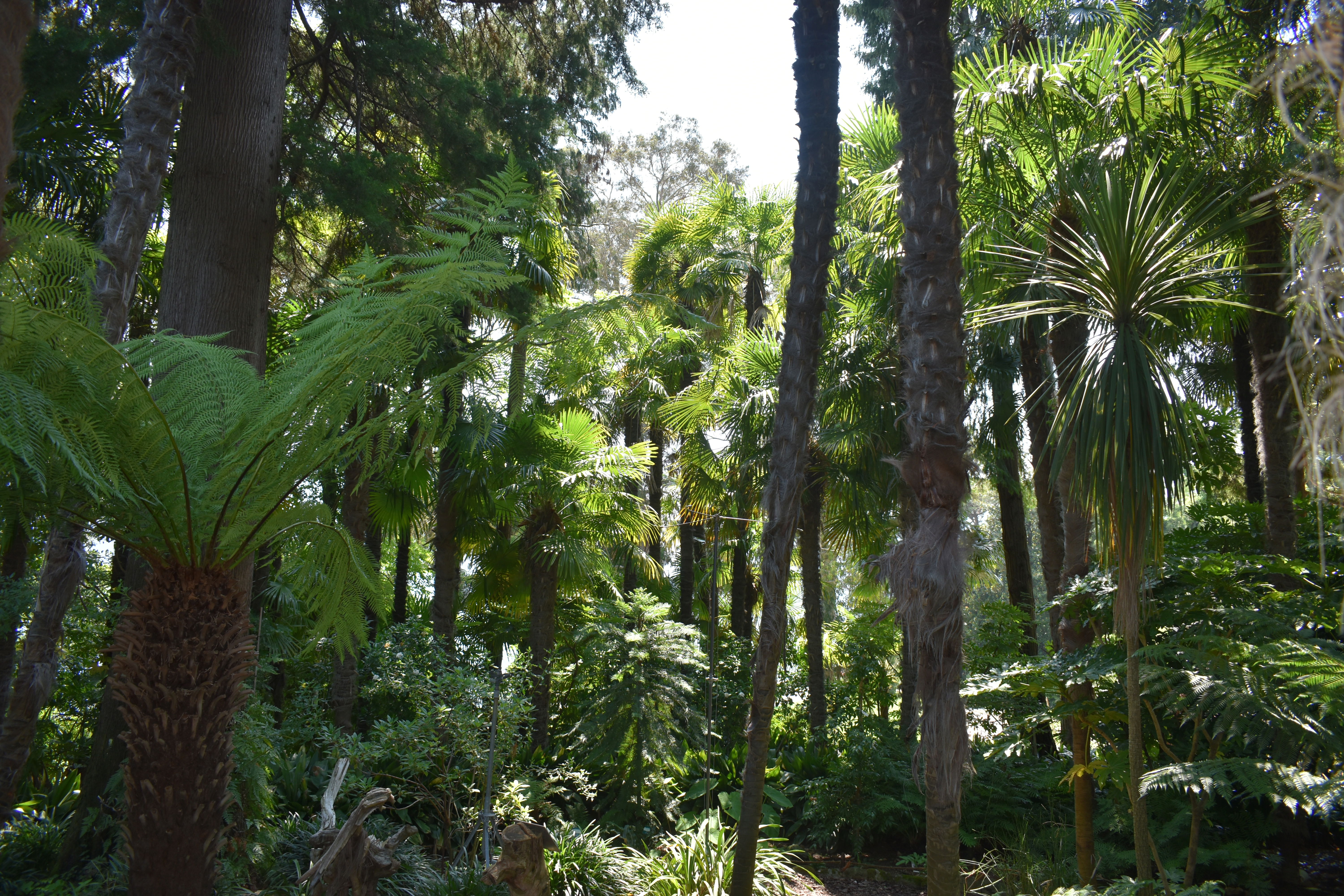
Some dinosaurs lurking in the woods
Finally, the colours of the rhododendrons and camelias, framed by giant bamboo, epitomise exotic Asia. In a mystical corner there are plants associated with esoteric rituals, hexes, conspiracies and even death sentences – like hemlock, for example. . It really is a fantastic place.
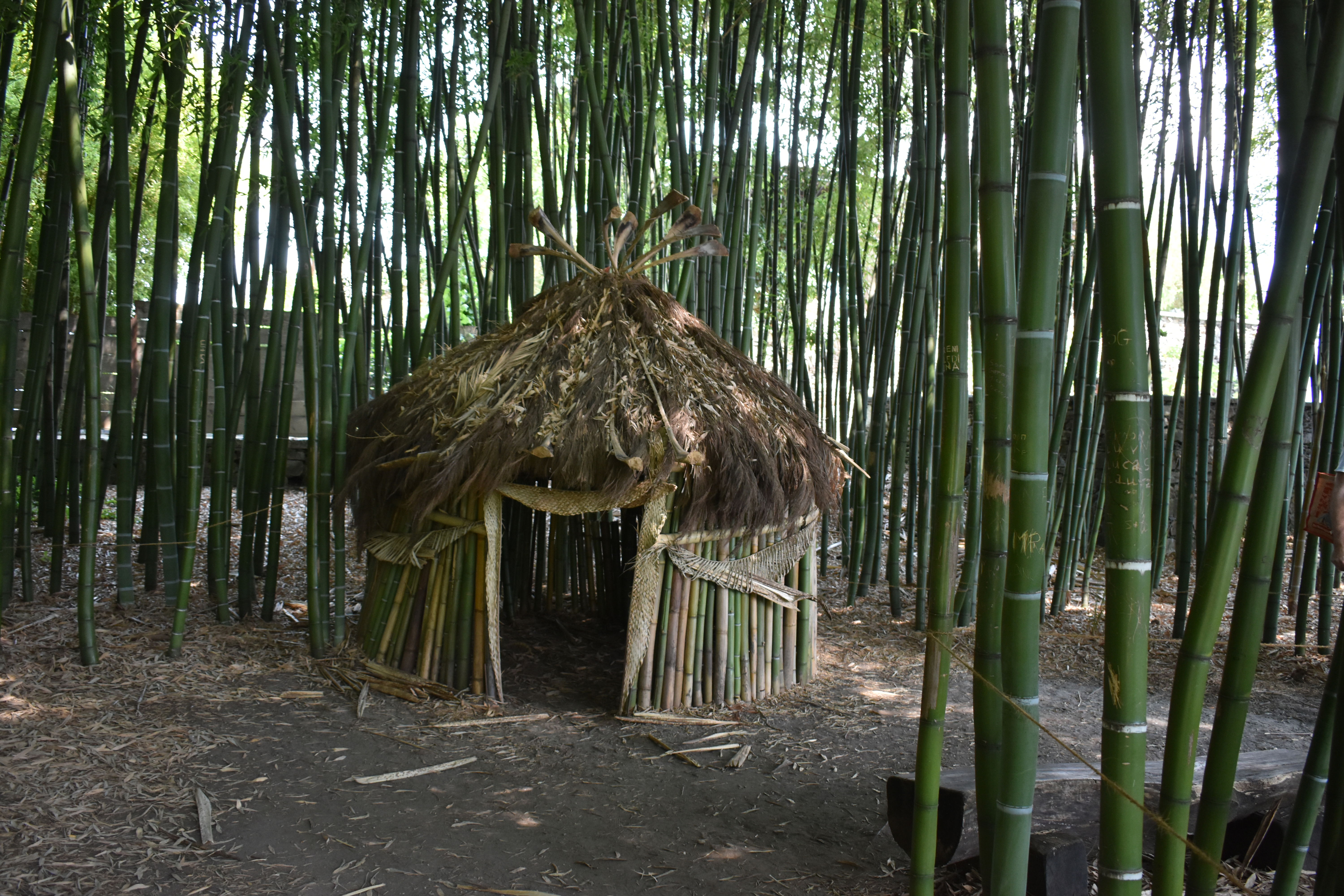
A taste of Asia
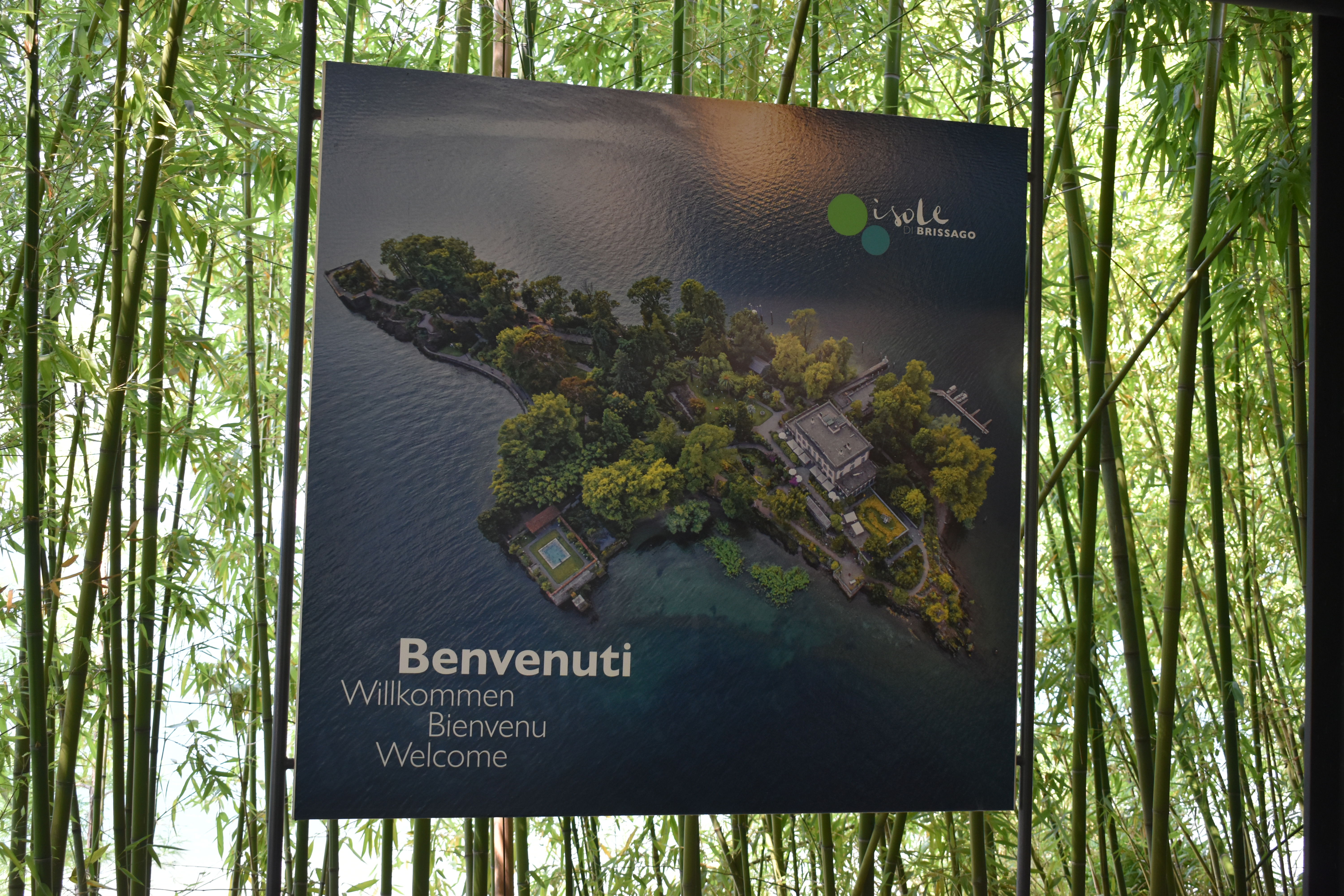
A lost world of plants
The ferry from the Brissago islands brings back to the landing stage in Ascona. Just cross from the dock is another historic site Albergo Elvezia. in 1925, during the Locarno Conference, while foreign minister Gustave Stresemann, was laid up with a fever, the German Chancellor Hans Luther popped out for a tete a tete with French Premier, Aristide Briand.
On 7 October 1925 , they met on the sun terrace at the Albergo Elvezia to discuss the Eastern arbitration treaties, League of Nations and Rhineland issues Throughout the conference, there had been a fair bit of tension between Stresemann and Luther, so Luther welcomed the opportunity to go off and talk to Briand by himself. He spoke fluent French, so no interpreters were required. The conversation lasted an hour. It was all pretty positive, Briand assured Luther that the great majority of the French people wanted peace and understanding with Germany, adding that, strange as it might seem, the French people now desired a more intimate relationship with Germany than with England. Luther agreed and that the great majority of the German people undoubtedly wanted peace. He then pointed out that Europe must come to an understanding politically and economically in order to be able to hold its own against America, with which Briand wholeheartedly agreed. Then they talked through a number of technical issues arising from the Conference. Unfortunately, that “Spirit of Locarno” did not last. Fourteen years later the Germans invaded Poland anyway.

The Albergo Elvezia, where German Chancellor Hans Luther and French Premier Aristide Briand might have prevented World War 2 and founded the European Union over a coffee
As the war in Europe drew to an end Ascona got a brief but important on role. To understand why , we have to go back to Monte Verita . One of the many Germans who was attracted to Ascona, was Edmund Stinnes, son, and heir of the Stinnes Industrial fortune When his father Hugo Stinnes died in 1924, he left his fortune to his wife , to be administered by his two sons Edmund and Hugo, Edmund was supposed to look after AGC, the Automotive business and their newspaper business , while Hugo took over the other shipping and industrial interests. Edmund does not appear to have been highly regarded businessman and the business became involved in a series of banking and legal disputes. In the end in October 1925, Edmund quit the family business and moved to the United States-he was still a wealthy man and was a Private Banking client of Eduard von der Heydt. The Stinnes family acquired a couple of properties in Ascona. In 1929, in New York , Stinnes married Marga von Gaevernitz, daughter of Geheimrat G. von Schulze Gaevernitz, a former member of the German Reichstag, Stinnes remained mainly in the United States, where he became a professor of Government. The Gaevernitzs were US citizens through their mother and Marga’s brother, Gero left for the United Stares. With his impeccable contact book and strong anti-Fascist credentials , Gaevernitz ended up working as an assistant to Allen Dulles, wartime Chief of the OSS in Berne.
We will go into Operation Sunrise another time. In short in February 1945. Max Waibel a Swiss Intelligence Officer, reported to Dulles that an Italian industrialist and a Swiss headmaster had contacted him claiming they represented SS General Karl Wolff , who was Head of all German and Italian forces in the rear areas of -Northern Italy. Dulles was a bit sceptical but sent Gaevernitz to meet them in Lucerne . Gaevernitz was sceptical too. Then on 2 March , two SS Officers SS Colonel Eugen Dollmann and SS Captain Guido Zimmer turned up on the Italian Swiss border at Chiasso, Waibel put them up at safe house in Lugano and notified the Americans, Gaevernitz was away on a skiing holiday at Davos, so Dulles sent another OSS agent Paul Blum to meet with them. Over a rather boozy lunch in Lugano, Blum gave the men a test from Dulles, he asked for the release of two valuable partisan prisoners. The two prisoners were duly bought to the Swiss border and covertly met with Wolff in Zurich. Things went quiet until on 17 March, word arrived from Parilli that Wolff would be returning to Switzerland in a day or two to present a concrete plan for the surrender of the German forces in Italy. Dulles was a civilian and negotiating the surrender of the 800,00 man army in north Italy required some military expertise, so two representatives from Allied HQ in Caserta were sent to join the negotiations.
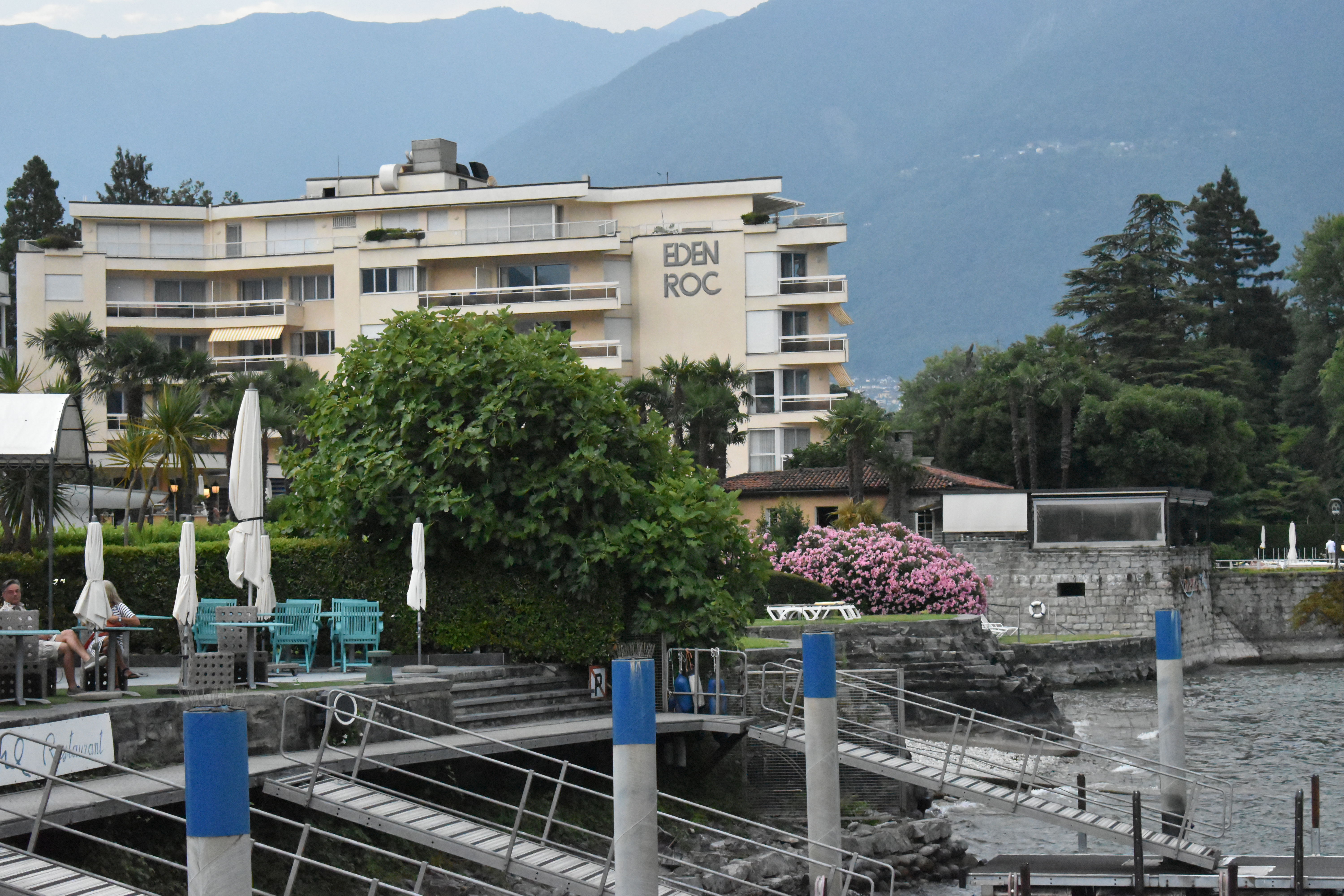
The lakeside villa where Operation Sunrise was concluded. Now in the grounds of the Eden Roc hotel. You might have to pay for lunch to see it up close
The British General Terence Airey was intelligence chief for General Harold Alexander at AFHQ in Caserta, General Lemnitzer held a similar role in the US Army. They were both career soldiers who had seen overseas duties . Airey in Egypt and Lemnitzer in the Philippines. Since they could not travel direct from Caserta to Switzerland the two generals flew to liberated France and then met with Dulles at Annemasse in France to travel into Switzerland. Here they encountered a problem although Waibel was helping, Uniformed British and American generals could not just walk in and out of the country. However, the Swiss were allowing US enlisted men in on transit to the US Legation. So the two generals became privates for the day. They swapped IDs with two US enlisted men and had to memorize their dog tag numbers. Fortunately for Lemnitzer, passing as a US enlisted man was easier than for the Sherbourne school educated Airey – Lemnitzer was the first to be questioned and managed to remember his new ID number. Airey got waved through, without much of a fuss. Waibel or his men, had probably fixed matters with the border guards. Arriving early in Berne, they were forced to hid in Dulles’s apartment, only going out at night waiting for news that Wolff was on his way, . The odd daytime excursion was arranged under the imaginative cover story that Airy was a dog fancier, who was seeking a certain type of Dachshund. Clearly somewhere very discreet was need for the secret meeting and through the good offices of Gaevernitz, the Stinnes properties in Ascona were identified.
Wolff had already made the trip into Switzerland several times, travelling in civilian clothes his passage across the border were facilitated by Waibel . Being strictly neutral to the last , the Swiss insisted that they were not actively involved in the negotiations. Nevertheless they had a vested interest in the negotiations taking place , the last things they wanted was for the Germans to stage a fighting retreat out of Italy, through Switzerland and at the back of their minds they had no wish to swap a German threat on their borders for a Soviet one. So Waibel and his men facilitated arrangements but stayed out of the negotiations. Once word reached Berne that Wolff was on his way the party set off for Ascona. They tried to stay discreet by travelling in small groups; however the Americans also insisted on sending trucks loaded with communications equipment and guards it was hardly discreet. Dulles and Wolff conferred at a lakeside property owned by the Stinnes family, La Casetta. It is still there but stands within the grounds of the exclusive Eden Roc Hotel. Unfortunately unless you have booked Thea meal, they are unlikely to let you in to take a look.
While Dulles tested the water with Wolff, Lemnitzer and Airey were hidden away at another Stinnes property in Ascona, at Via Santa Croce This one was up in the hills , overlooking the town, you .
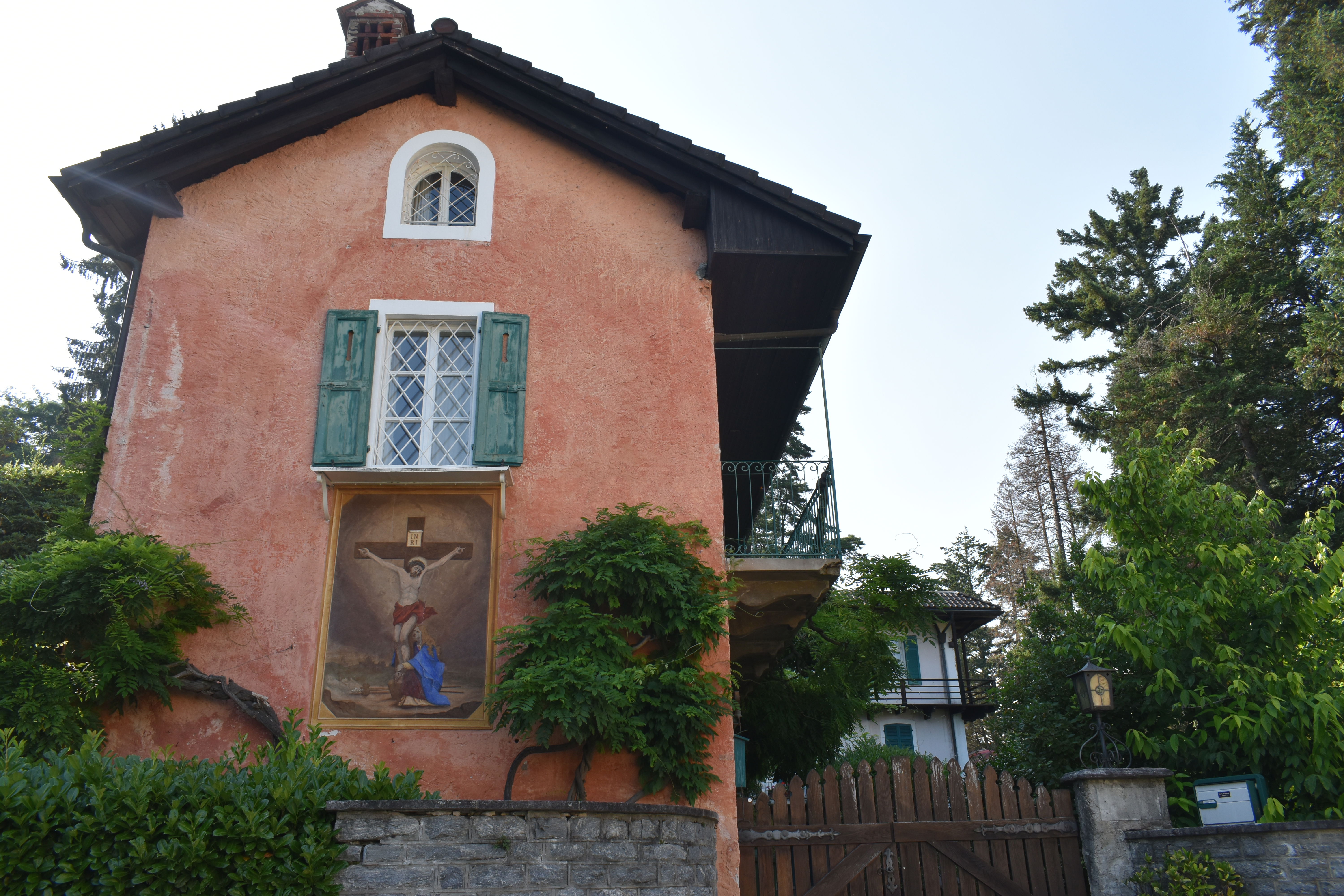
Another Stinnes villa in the hills above Ascona on via Santa Croce- where Generals Lemnitzer and Airey waited for word that Sunrise was on
When he was ready Dulles summoned the generals down to the lakeside to discuss the military arrangements with Wollf. After an initial embarrassment on how the generals could avoid shaking hands with an SS General, the talks progressed well. Unfortunately after maters had been agreed, Dulles political masters in the US got cold feet and the higher ranks of the SS also began to suspect that Wolff was up to no good. The problem that worried the Americans was negotiating behind the backs of the Soviets, when they had previously agreed that their should be no separate peace with the Germans.
It was to be another two months on 2 May , before German representatives flew down to Caserta to sign the instrument of surrender of German forces in Italy. In any case the war in Europe ended six days after that. Sunrise has always been controversial, had it worked the war in Italy might have ended two months earlier at a considerable saving in Allied, Italian and German lives. On the other hand it might have caused an earlier break with the Soviets. Some date the start of the Cold War to the talks in Switzerland. There seems to be a general feeling that Dulles rather played uo the importance of the talks for his own benefit. Whatever the reality, Ascona was host to a historic event. Both the villas are now private property, and there is little to commemorate Ascona’s role in ending the Second World War, which seems a shame.
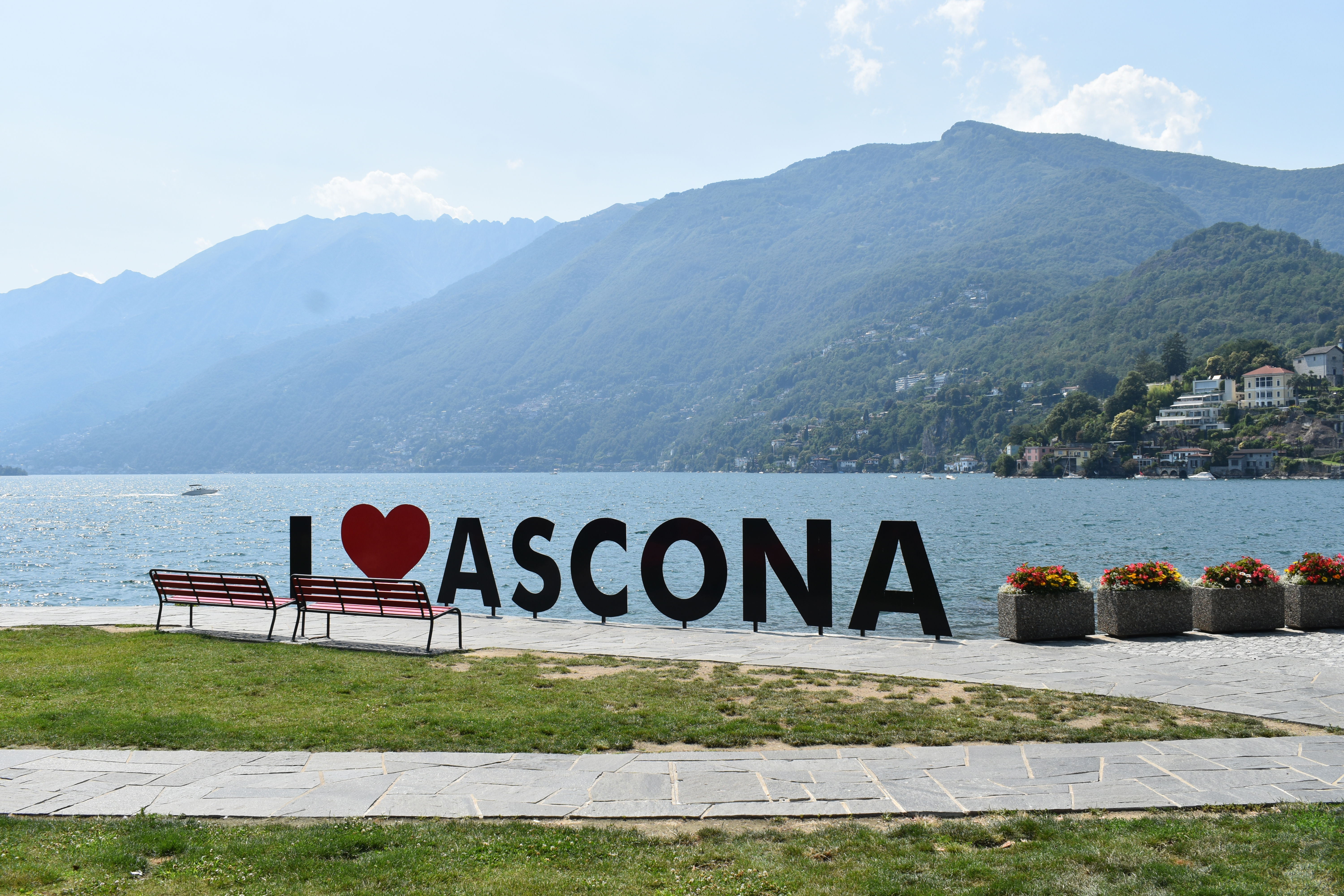
Further reading
The short Story " Monte Verita" is in the anthology "The Birds and other Stories"
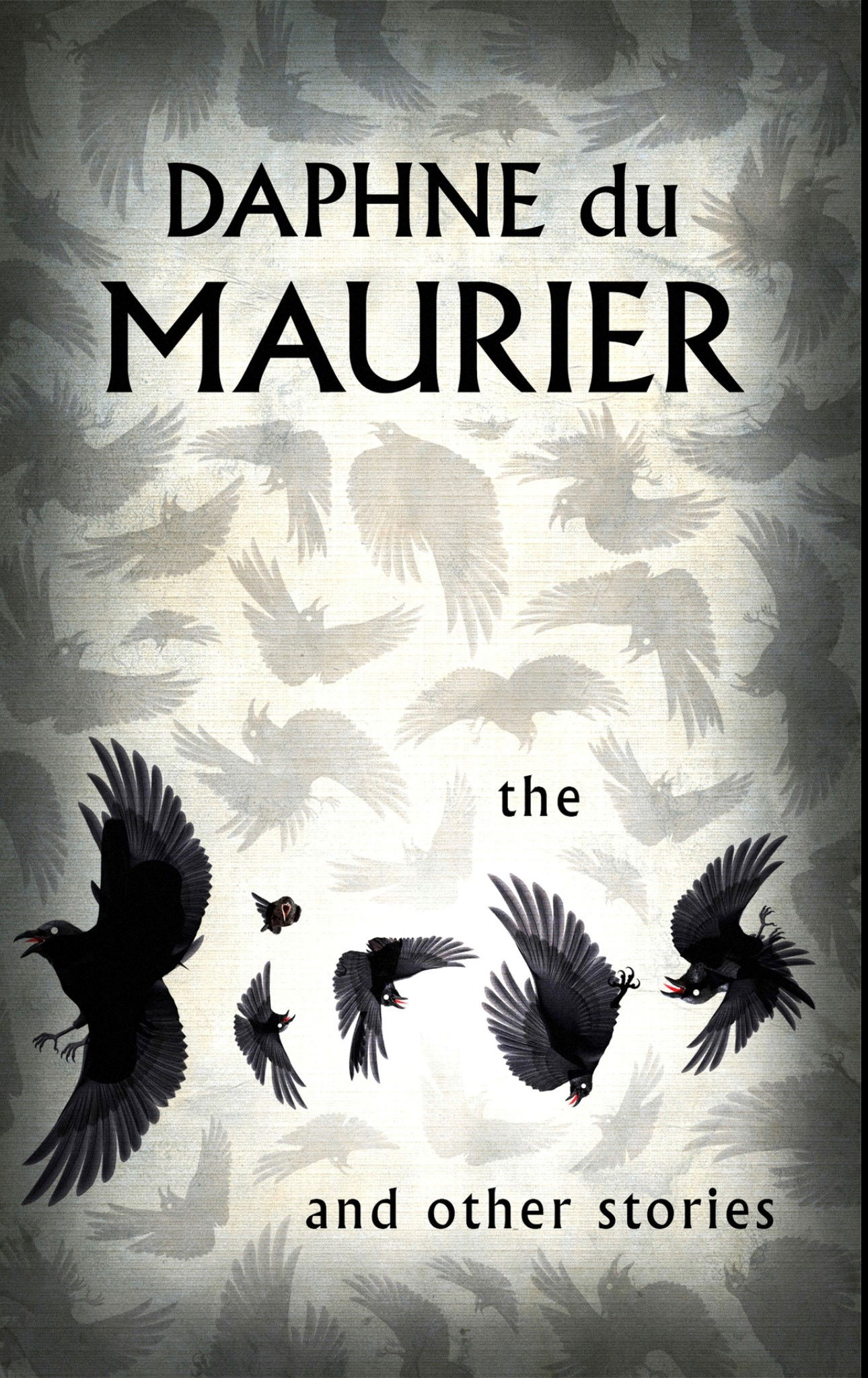
A semi fictional novel based on the story of Lily Volkhart and her Kinderheim in Ascona

Ernest Hemingway's "A Farewell to Arms"
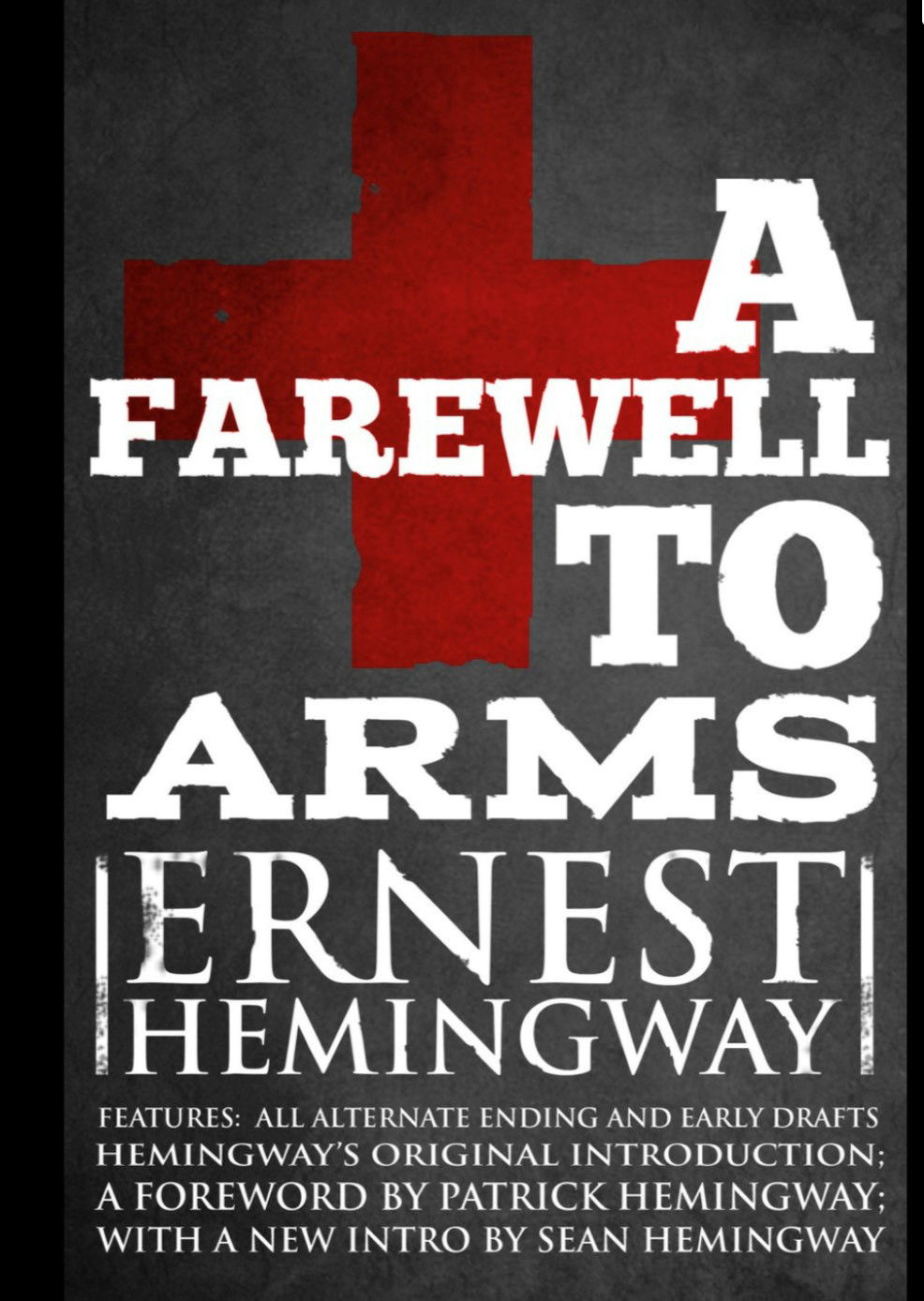
A free version of The World Set Free by H G Wells on archive.org